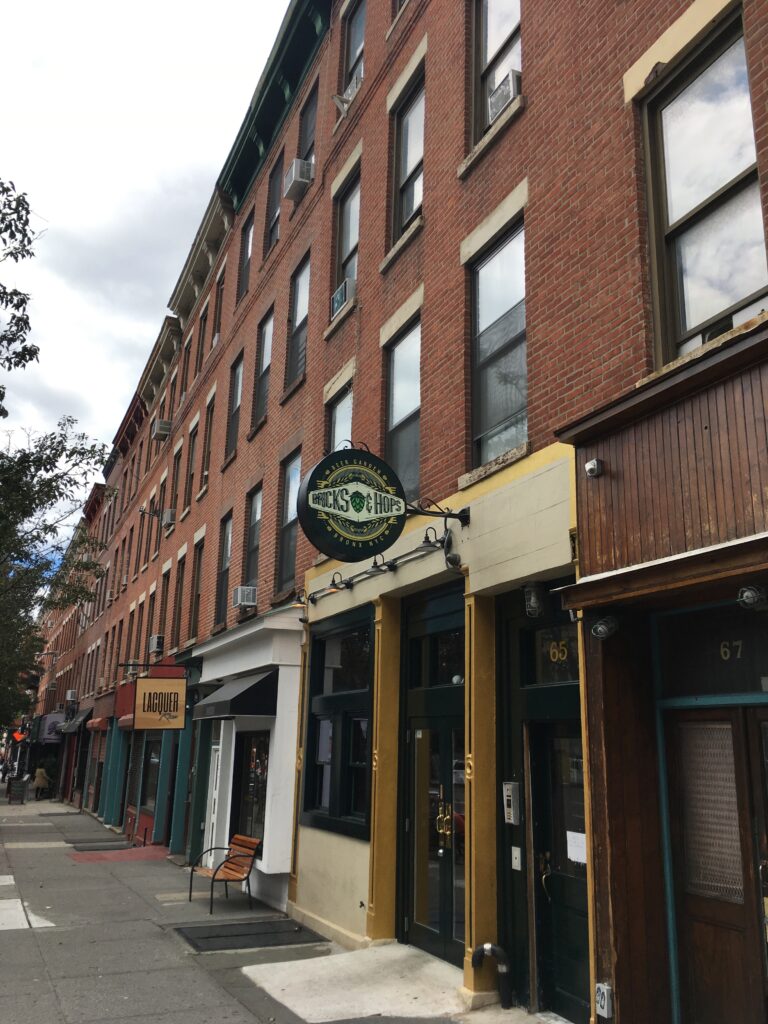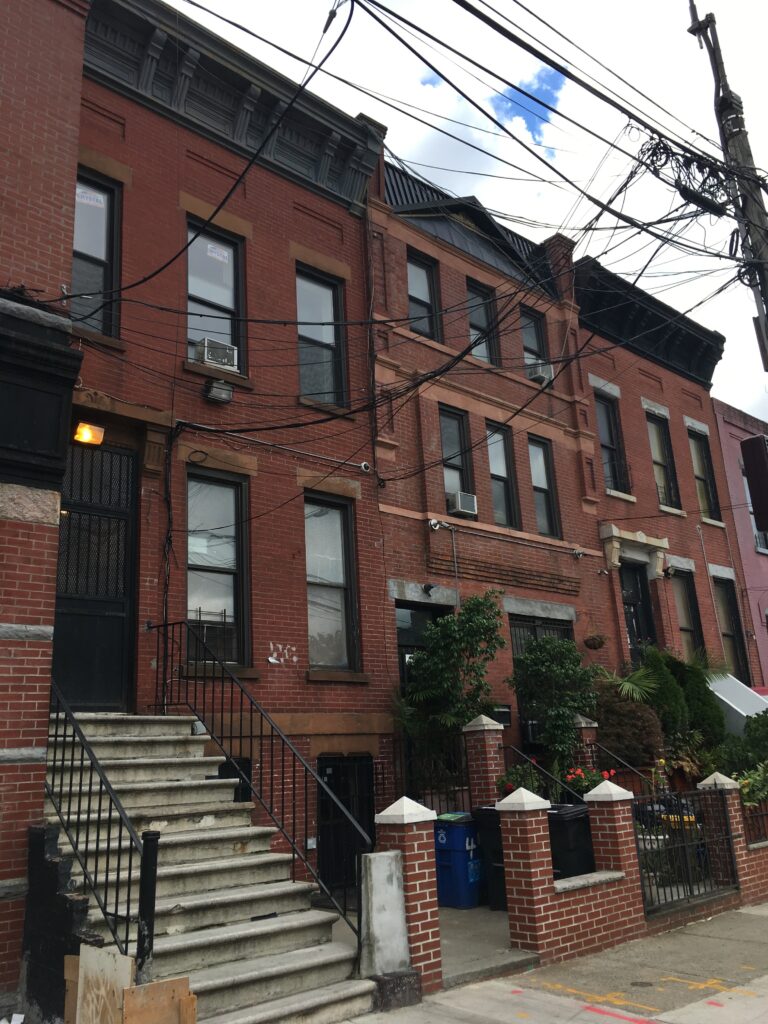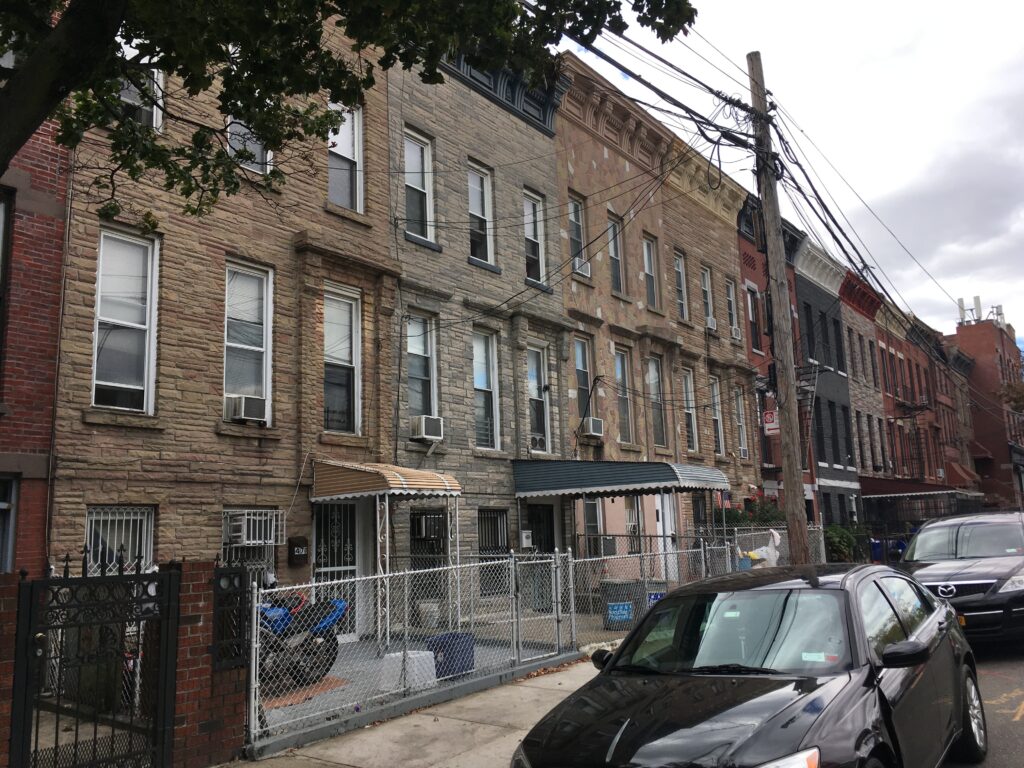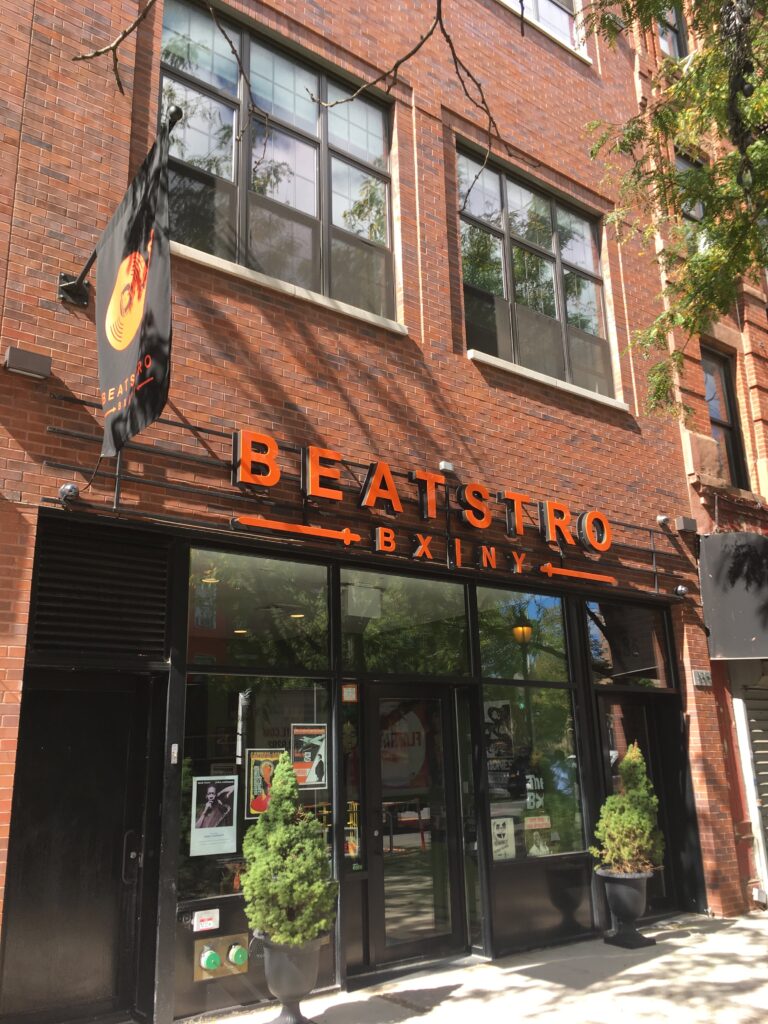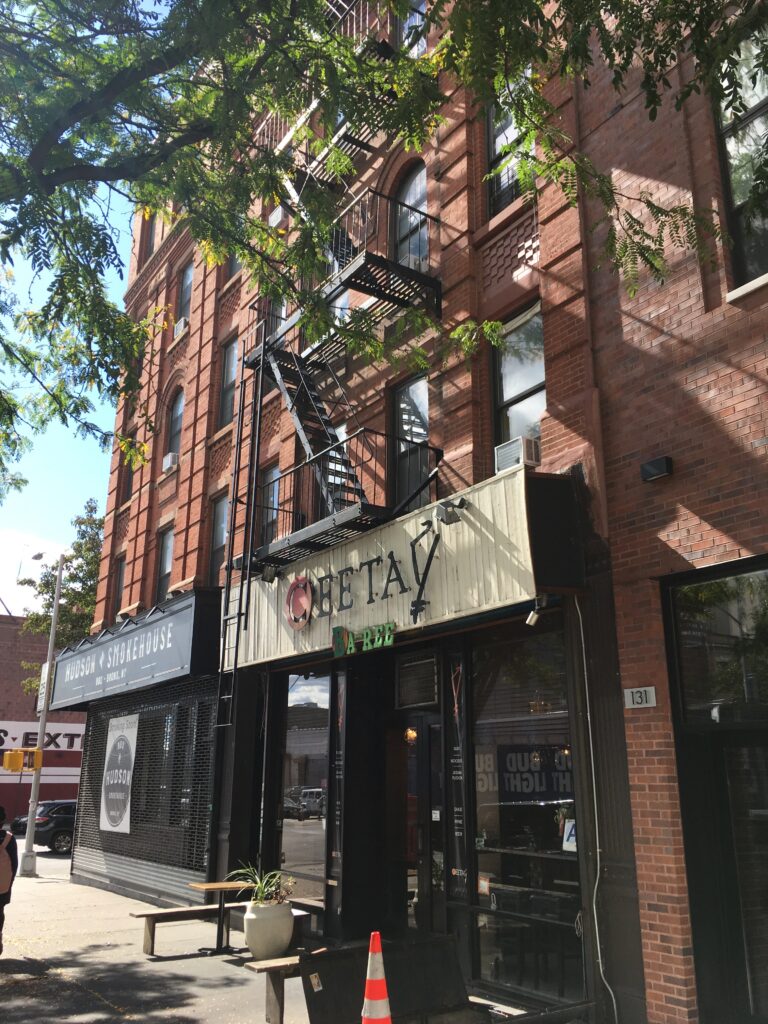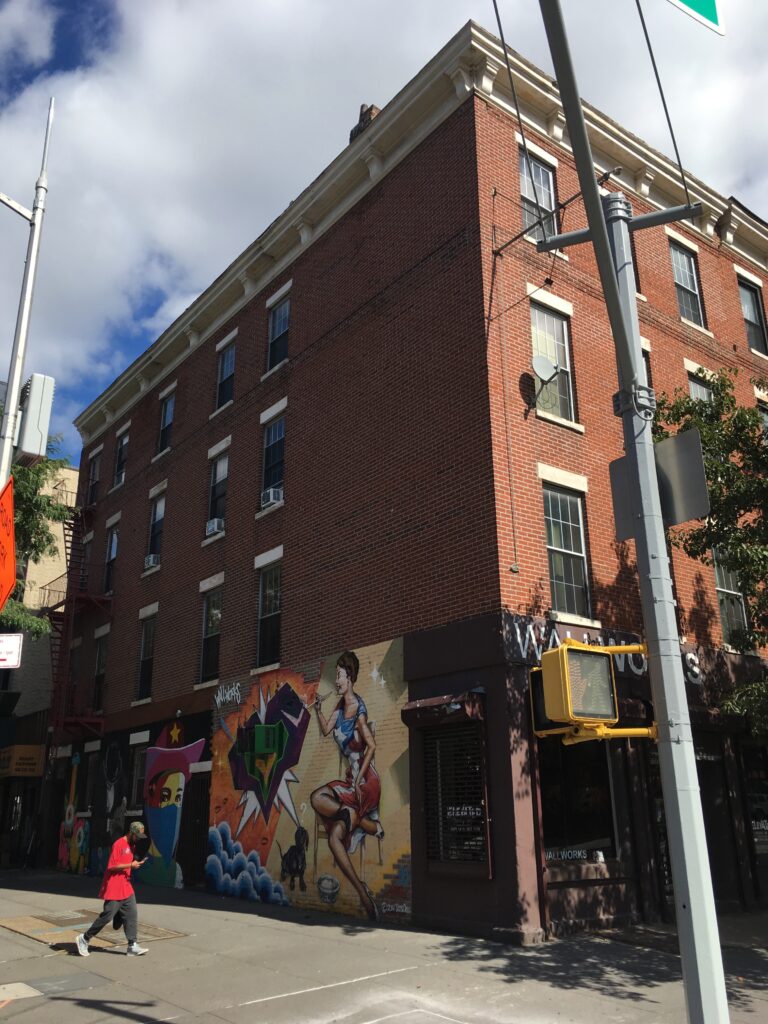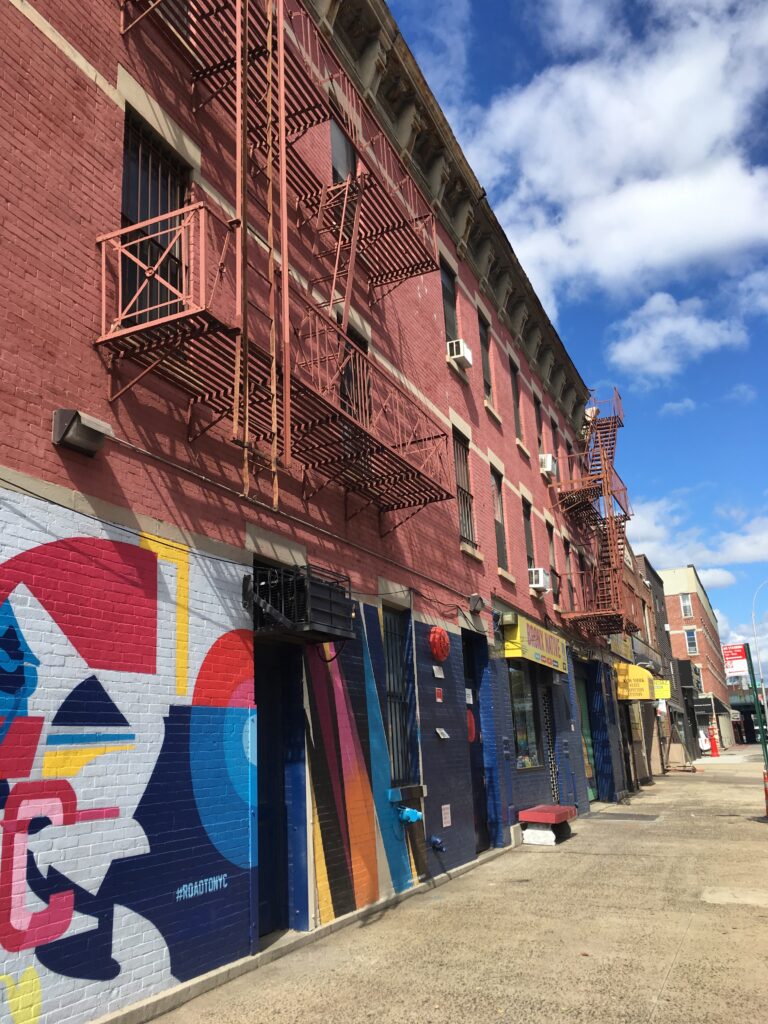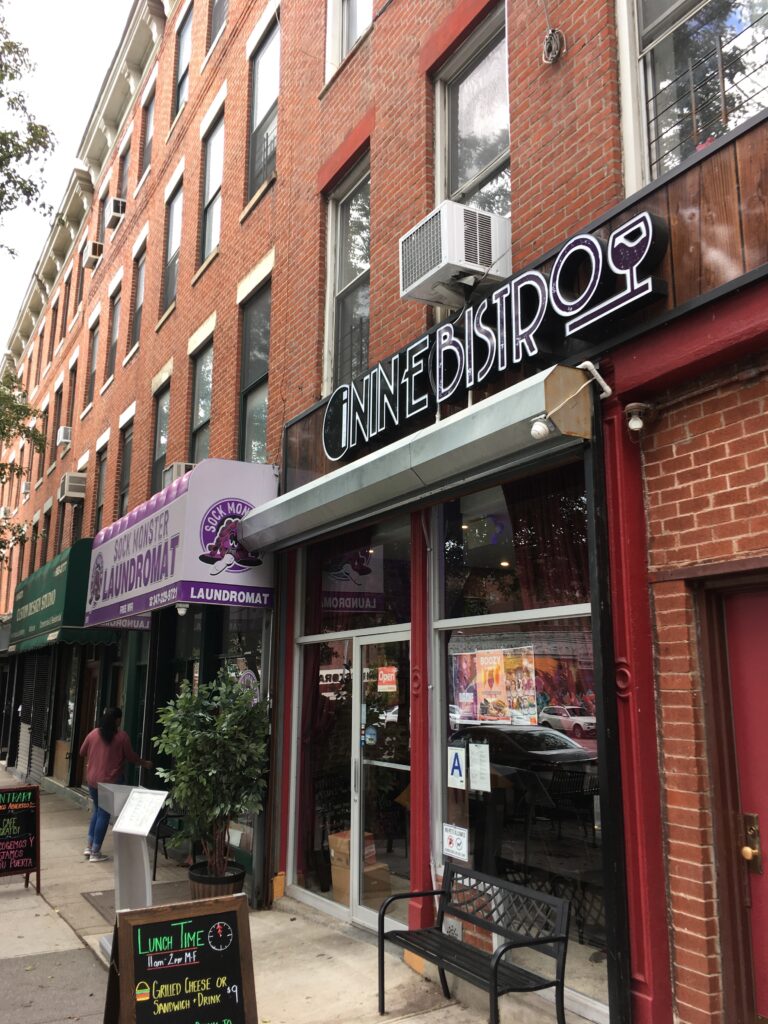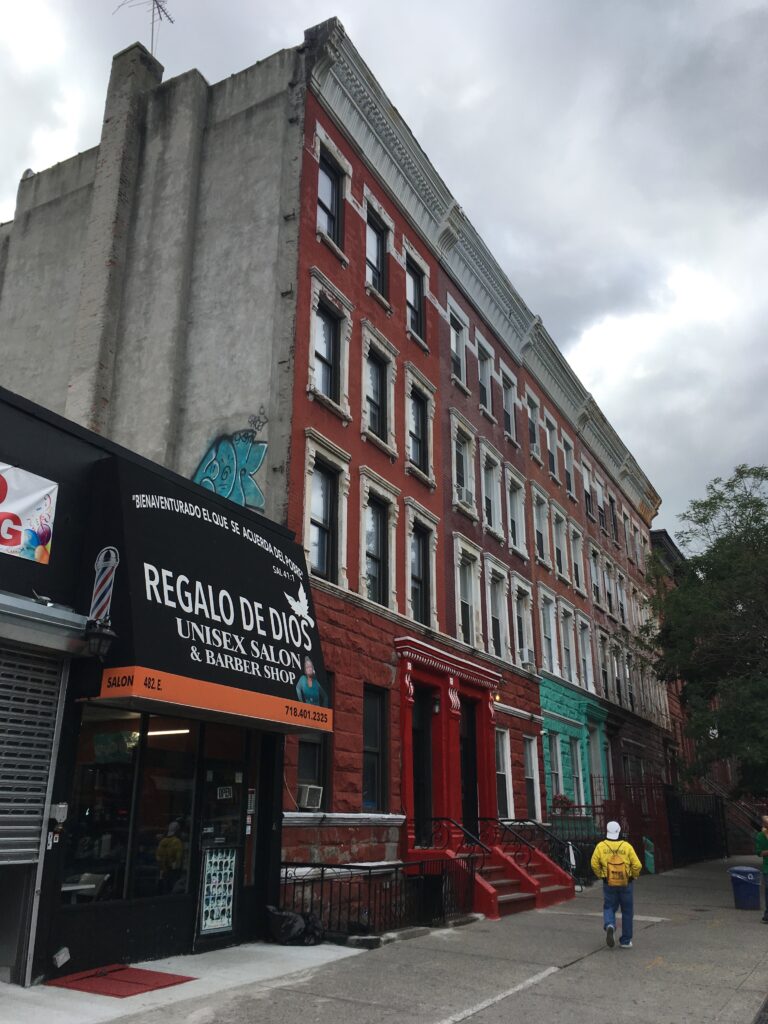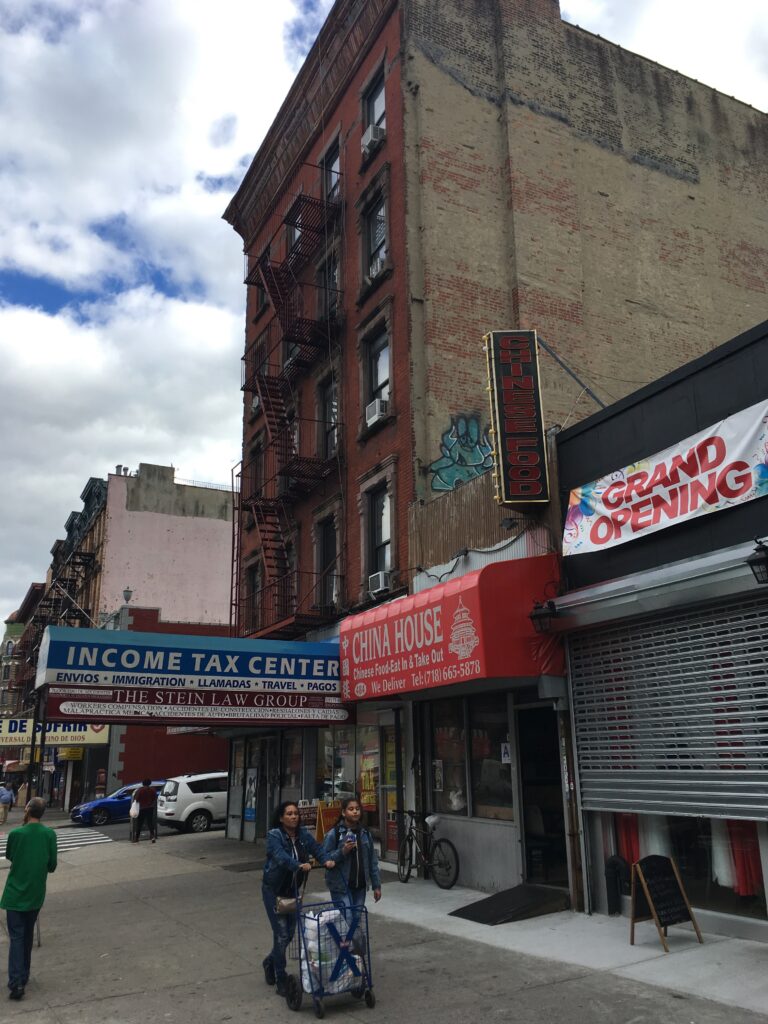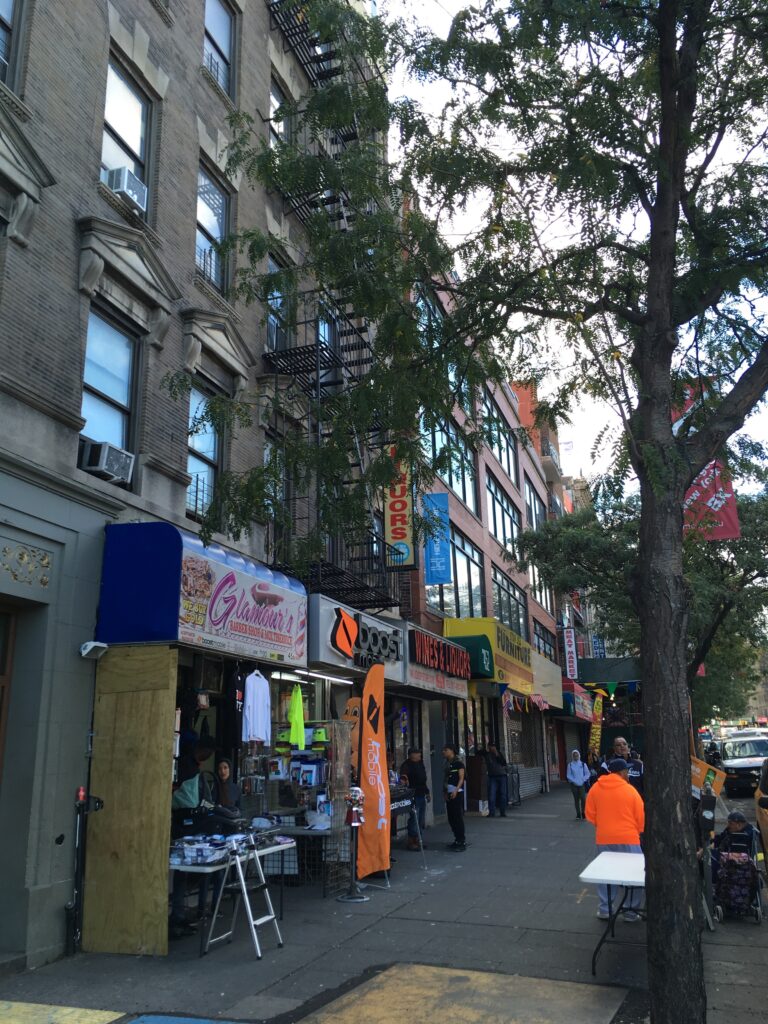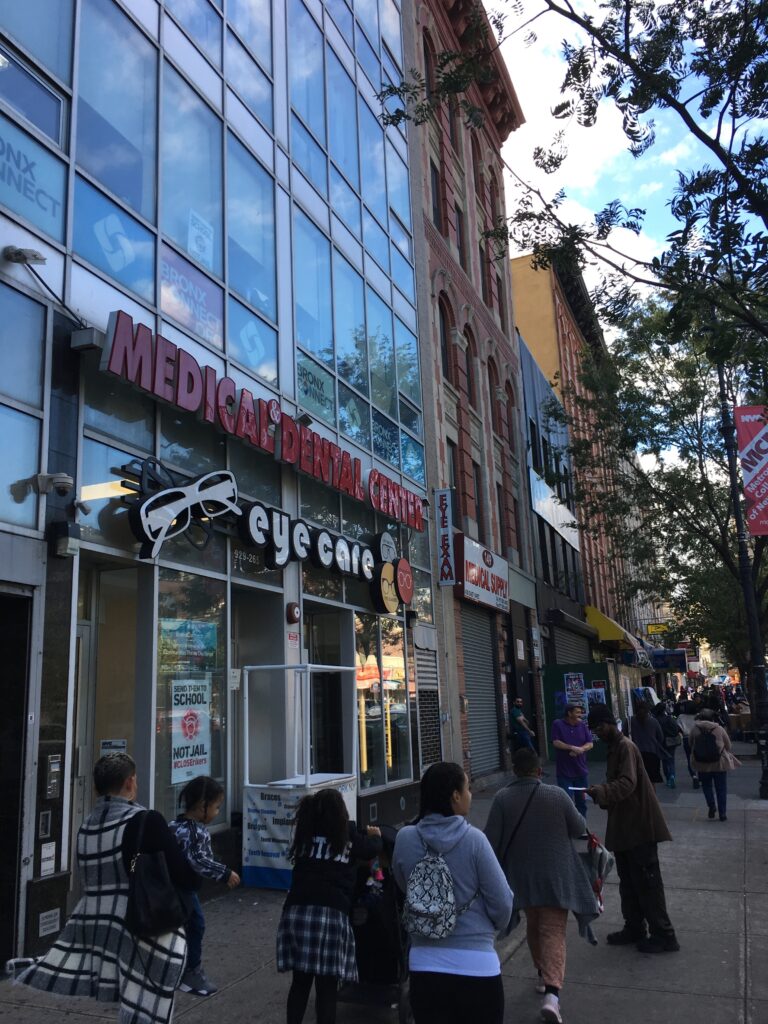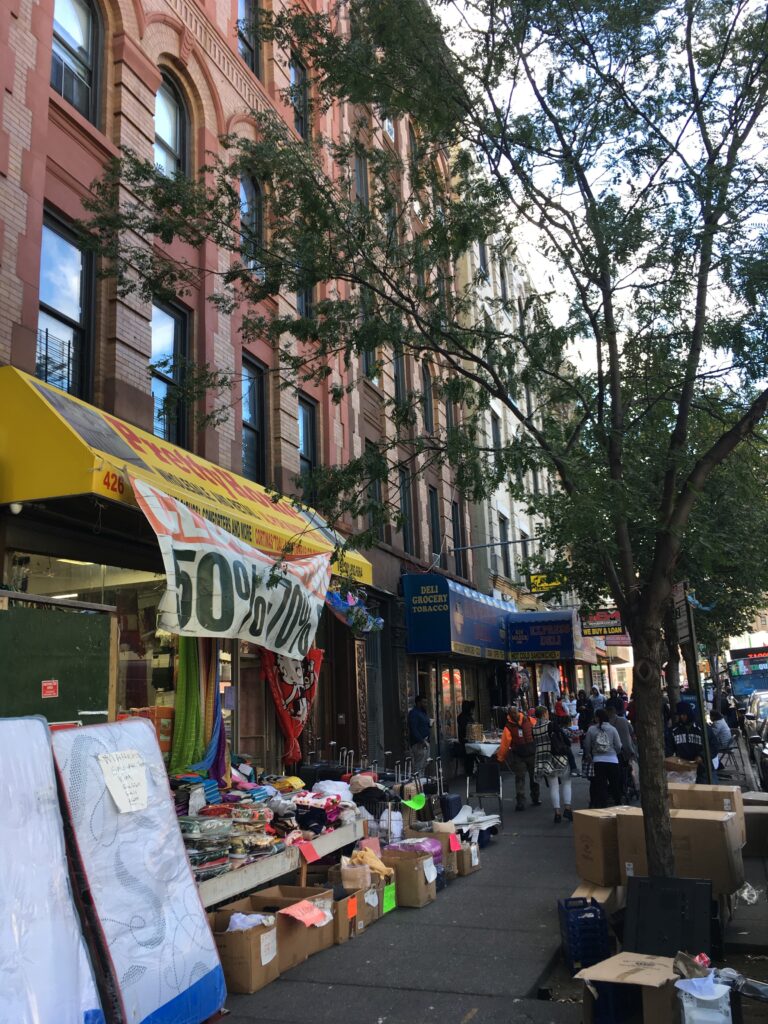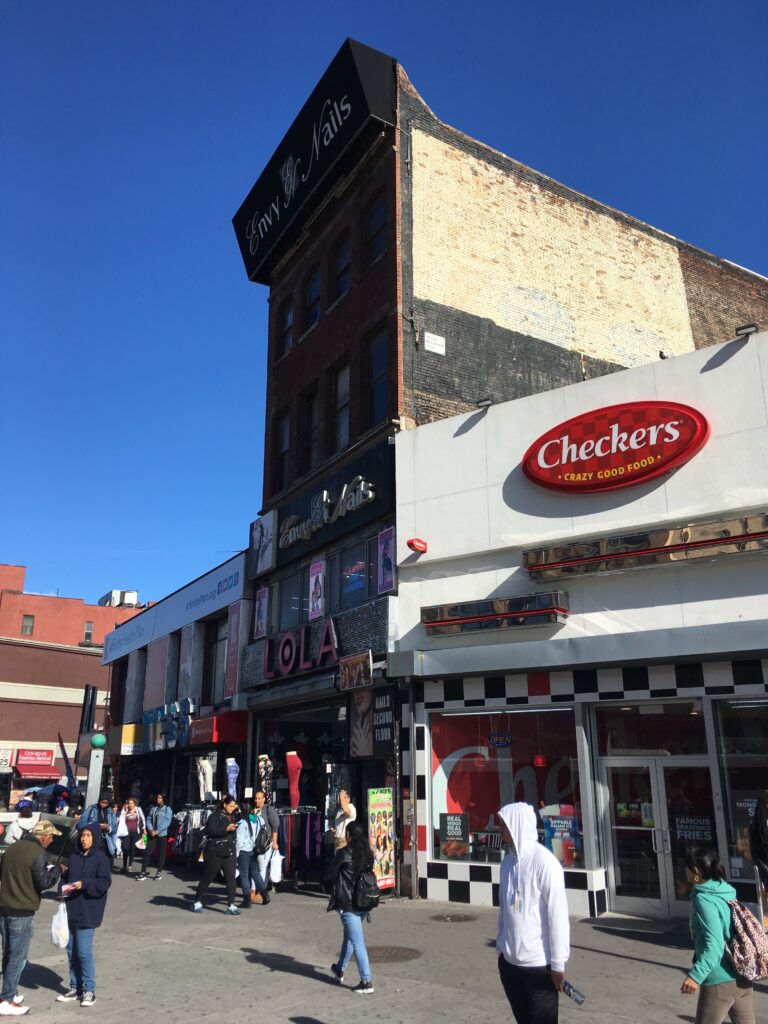Welcome to Mott Haven
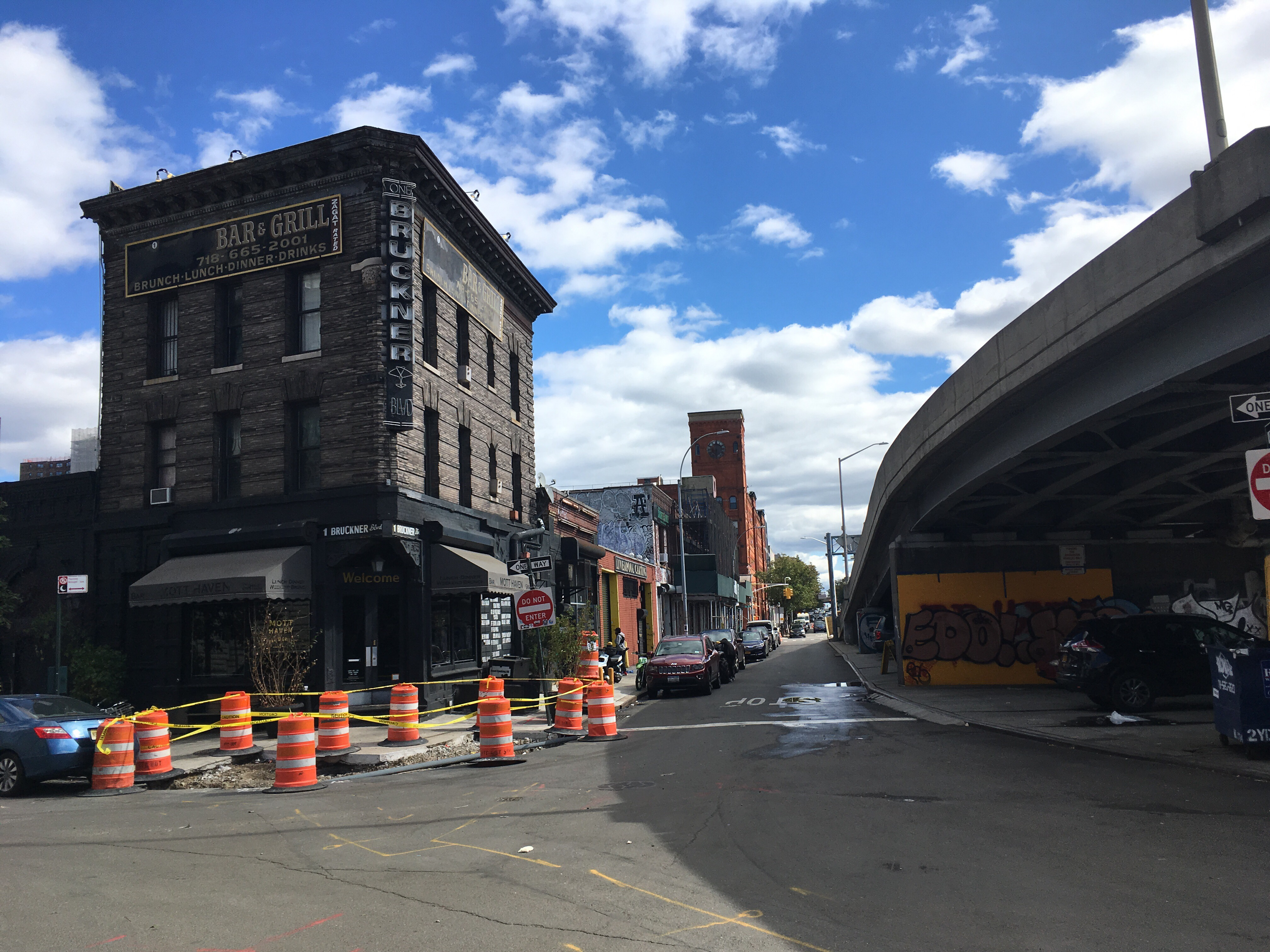
This picture helps tell the story of what happened and what is currently happening to Mott Haven. Standing under the Bruckner Expressway entrance ramp to the Third Avenue Bridge you can see an old, grey brick tenement, a remnant from the days when Bruckner Boulevard was the main street of the burgeoning South Bronx. You can see the highway entrance ramp leading to Bruckner Boulevard that destroyed the very street it served, the old one-story light industrial buildings left over from the abandonment era of the 1970s, and in the distance you can even see the grand red-brick piano factory left over from the days when Mott Haven was known for its piano manufacturing industry.
The above three pictures are the remains of some of tenements and row houses built here over a century ago.
In the early 20th century, fed by the rapidly expanding third avenue elevated line and the collective desire of Jewish and Italian immigrants to “escape” the Lower East Side, Mott Haven became a booming outer-borough neighborhood. First and second generation immigrants who were lucky enough to work their way out of extreme poverty moved here, where they luxuriated in comparatively large apartments, cleaner air, and the vast open spaces of The Bronx.
Bruckner Boulevard was to Mott Haven what Main Street is to Flushing; it was the zipper that tied the whole neighborhood together. It was the center of commerce and art – small businesses, theaters and dance studios made their home on this wide avenue and around its El stations.

The front door of an old tenement that now has an empty lot to its right and the entrance ramp to the Bruckner Expressway across the street.
Mott Haven thrived and grew for decades until the 1960s when it was designated as “blight” and slated for wholesale destruction by Robert Moses’s bulldozer. While most of 138th and 149th Streets survived urban renewal, Bruckner Boulevard did not. Almost the entirety of it was destroyed as the road was widened to make way for the elevated expressway that now runs above. In addition to Mott Haven’s main thoroughfare being destroyed, much of its beautiful old housing was demolished and turned into large public housing projects.
As the working class Jewish immigrants literally watched their neighborhood be torn down in front of their very eyes, they started to move out. The ones who were lucky and had just enough money moved north to the northern Bronx or Westchester and the ones who weren’t as lucky moved back to the Lower East Side, forcing the next generation to repeat the cycle of poverty that their parents had worked so hard to escape. As Mott Haven was abandoned by its decades-old community, it started to be populated by working class Puerto Rican and Black people who, in the face of institutionalized racism and disinvestment from both the city and their own landlords, managed to dawn a new age of art and culture. Hip Hop and Graffiti street art were born in the neighborhoods of Mott Haven, Port Morris and Melrose, all of which were collectively referred to (by the middle class suburban White people) as the South Bronx.

Tenements stand next to a storage lot and empty billboard. When these buildings were built they probably looked out at other buildings, now they look out over the Bruckner Expressway.
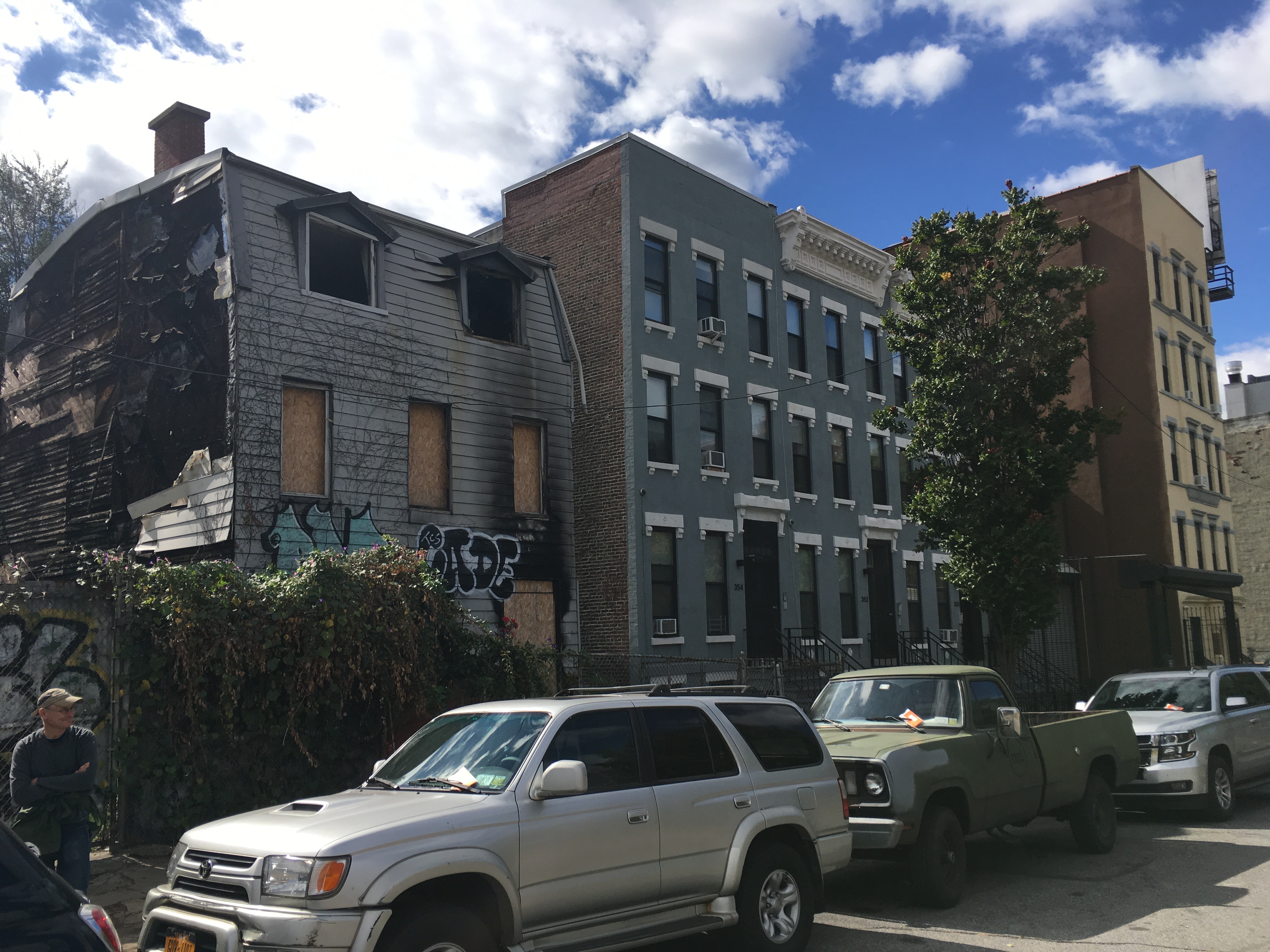
This burnt-out building next to some newly-fixed up tenements creates an eerie mix of poverty and wealth.
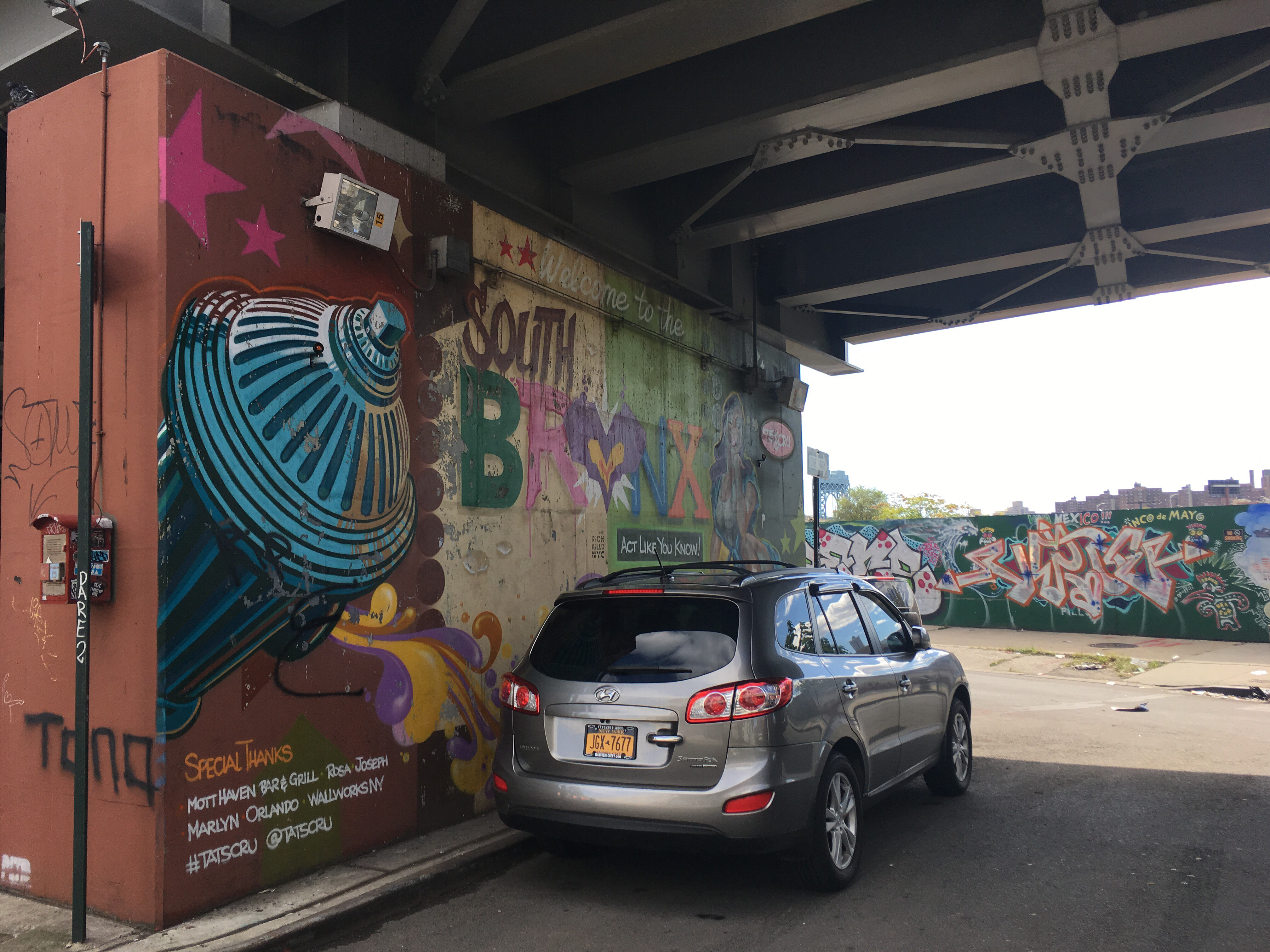
Anti-Gentrification mural under the Third Avenue Bridge entrance ramp. The mural states: “Welcome to the South Bronx. Act like you Know!” And if you look carefully, in small letters underneath the word “Bronx” are the words “The Rich Killed NYC”
All of this brings us to today and the continuing story of gentrification. Mott Haven is now split in two. To the north of the Bruckner Expressway lies a community made up of working class Latino and African heritage people, many of whom are either old-timers who moved there in the 70s or new immigrants who are just getting a foothold in America. However, the south side of the Bruckner Expressway looks almost unrecognizable; as if someone had set off a gentrification bomb and all of the hipster coffee shops, vintage fifty dollar record stores, pet boutiques and wine bars from Williamsburg had splattered onto the surrounding buildings and blocks.
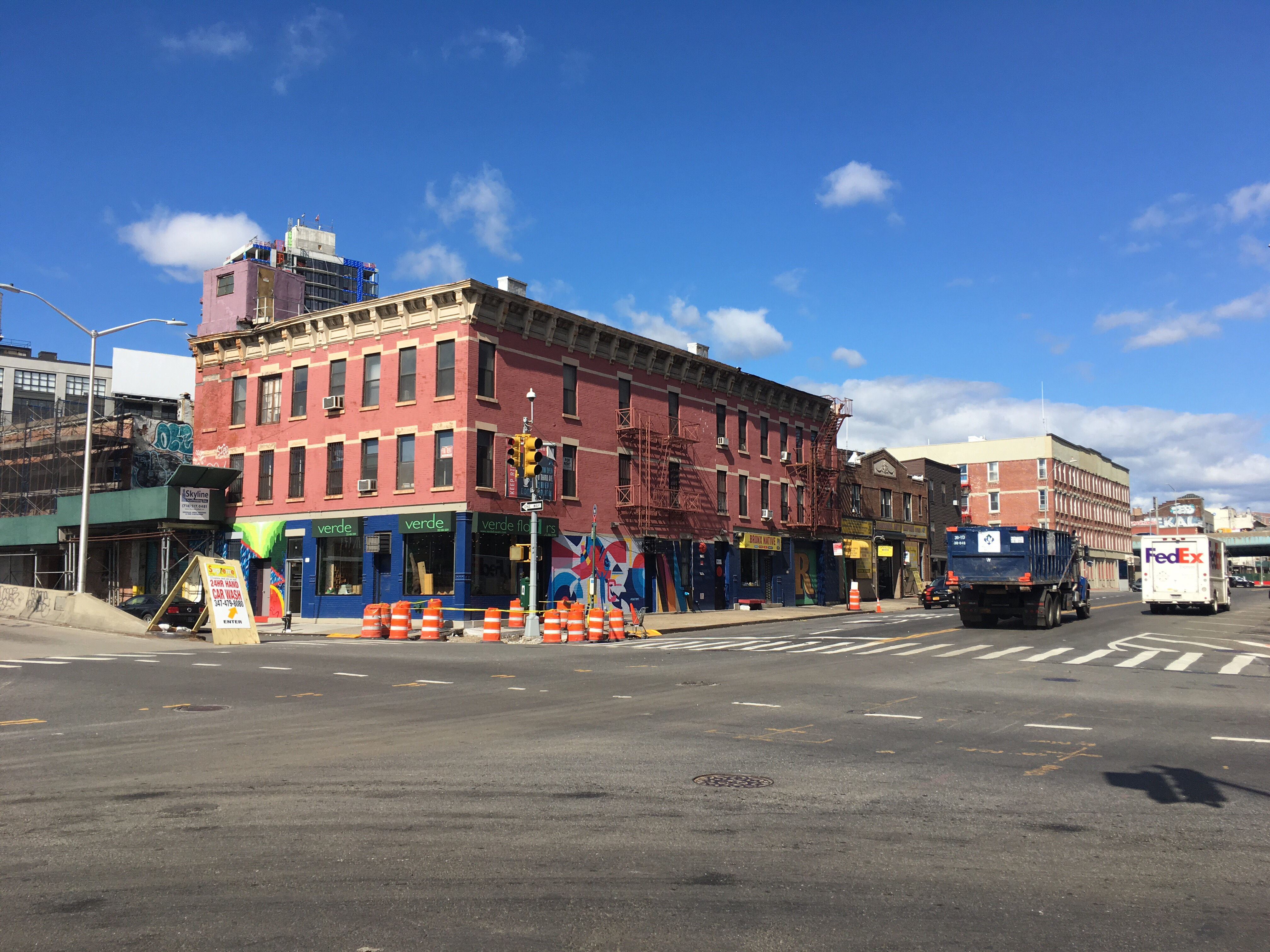
Bruckner Boulevard and Lincoln Avenue
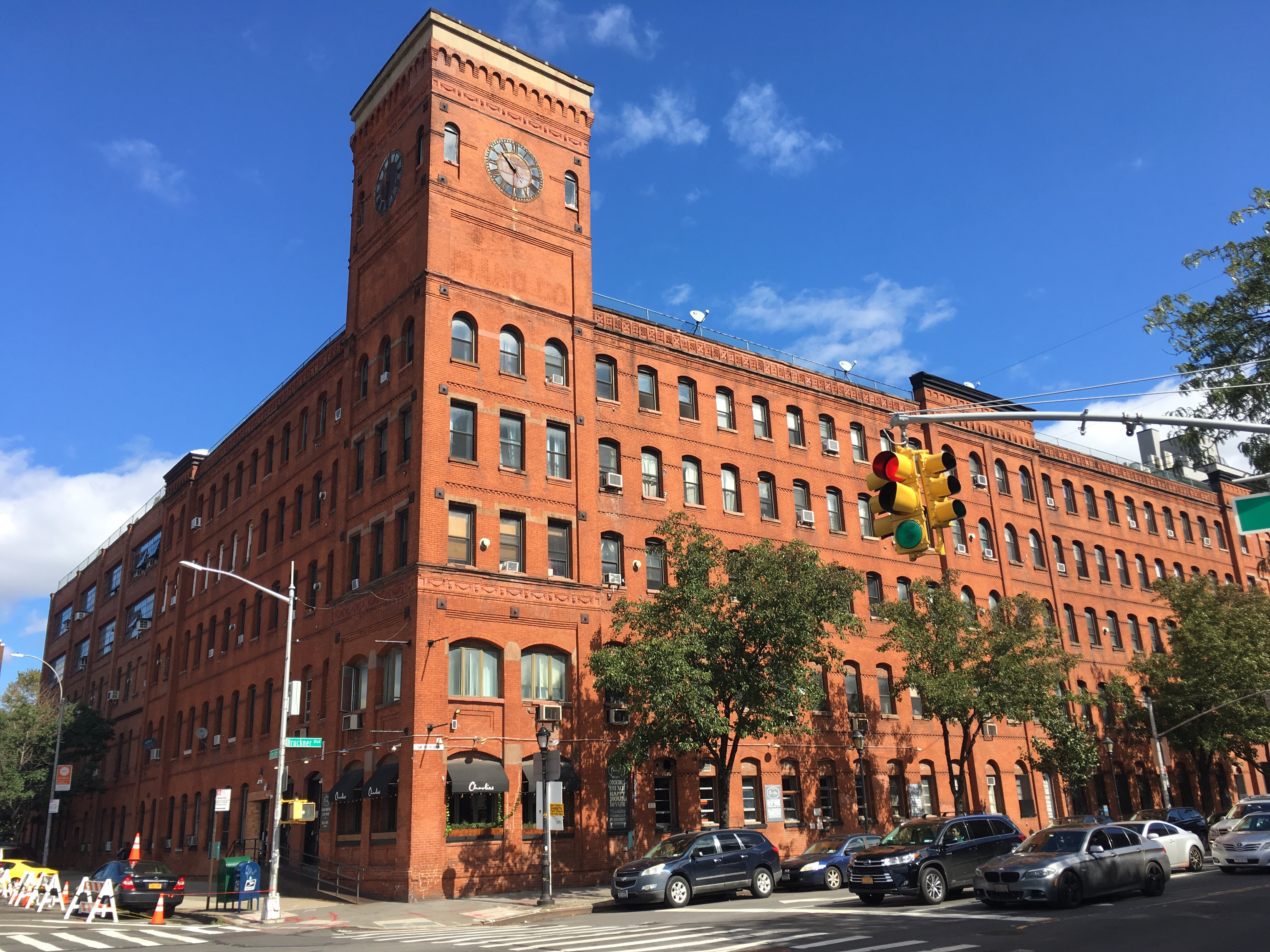
Bruckner Boulevard and Lincoln Avenue
The Estey Piano Factory, seen above in all its grand splendor, was built in 1885, just a few years before the elevated train would rumble in from Manhattan. The factory was in operation for almost a hundred years until it, and much of the rest of New York’s manufacturing, closed in the 1970s. In the 1990s artists moved in and converted the building into loft space. Today most of the artists have been kicked out as the neighborhood experiences hyper-gentrification and rents rise to above $2,500 a month.

Bruckner Boulevard between Lincoln Avenue and Alexander Avenue
Seen above, a just-finished luxury condo stands next to the Estey Piano Factory.
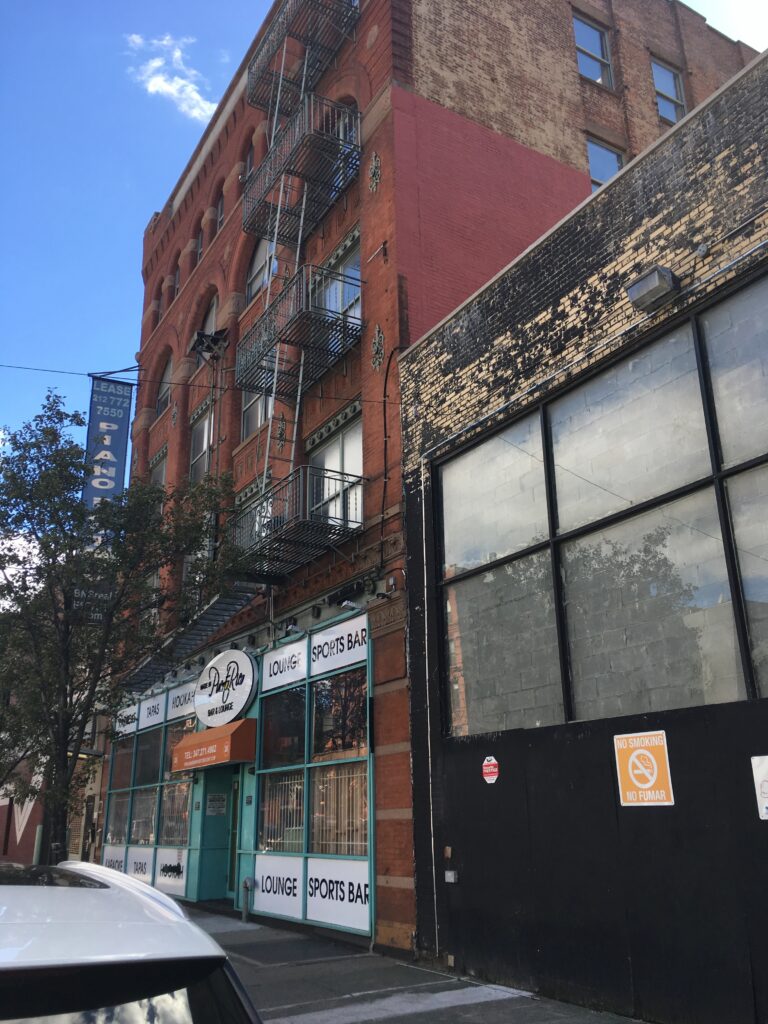
Bruckner Boulevard between Lincoln Avenue and Alexander Avenue
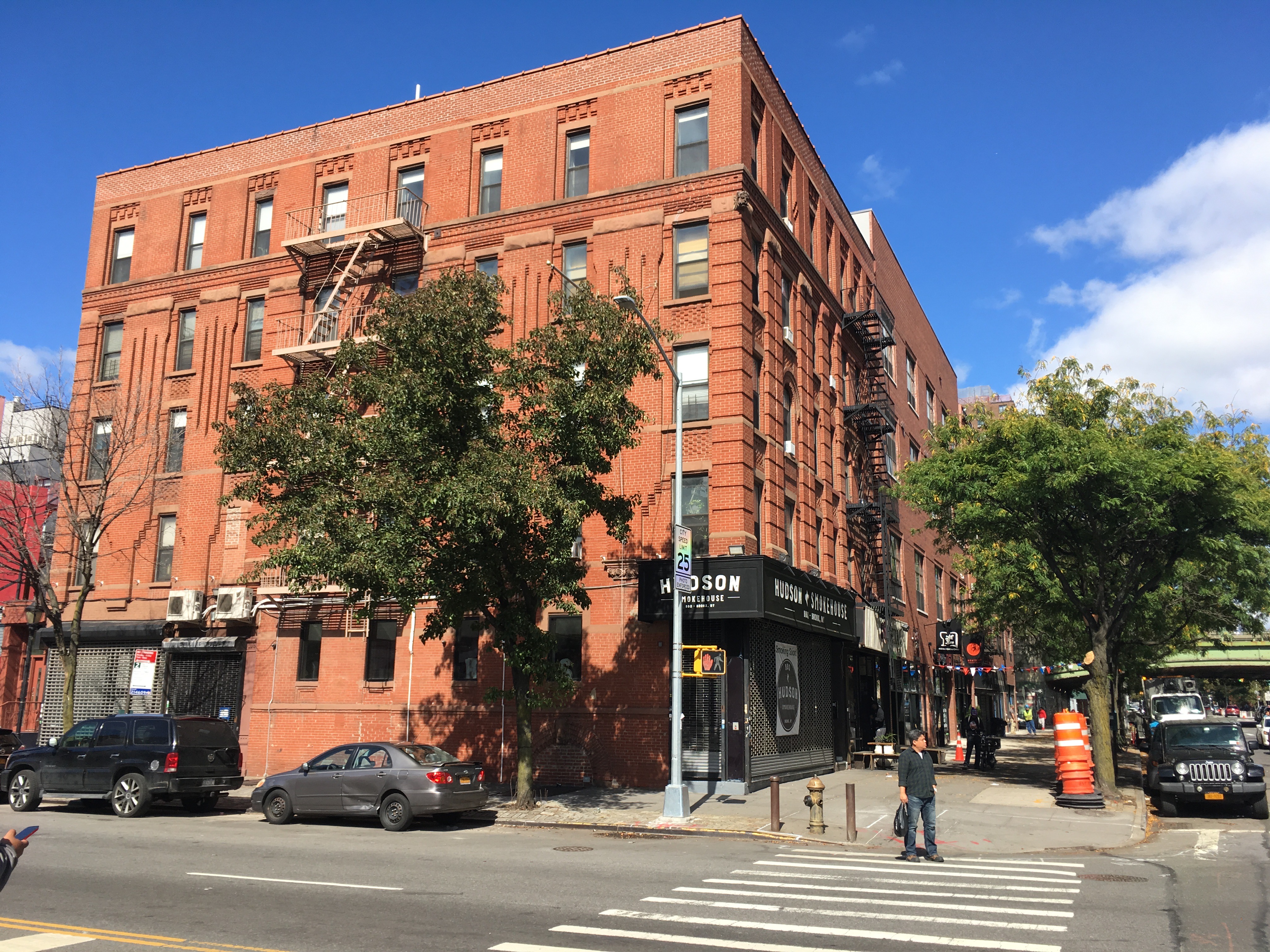
Bruckner Boulevard and Alexander Avenue
If hyper-gentrification could be a place, the above block of Alexander Avenue between Bruckner Boulevard and 134th Street would be it.
The term “hyper-gentrification,” coined by Jeremiah Moss in his gripping book Vanishing New York, is the perfect word to describe what is happening to this part of Mott Haven. Hyper-gentrification is a process only seen in the last decade or so and it is best explained in contrast to standard gentrification, which has been around our cities since at least the 1970s.
Gentrification is the process whereby working class people, usually of color, move into a disinvested neighborhood because of cheap rents, infuse the neighborhood with their food, language and culture, and create a vibrant community. Next, artists, who are usually White, move into this same neighborhood mainly because of the cheap rents but partly because of their interest in being in an “authentic” or “diverse” neighborhood. To get to this point in the process usually takes at least a decade or two and the artists and working class people live in decent harmony during this time. What happens next is upper-middle class, again usually White, people are drawn to this neighborhood, either because of the artists making it “cool” or the original working class people making “authentic.” This final demographic shift, and the influx of wealth that it provides, is what eventually kills the neighborhood. This is because the rents suddenly rise as landlords notice that they can make a greater profit. As well, developers see the possibility of building new, more expensive buildings, leading them to demolish the old buildings and kick out yet more of the old community. Finally, after about three decades, the process is complete; the old community is gone and their neighborhood is full of wealthy people and stores catered to their tastes.
In contrast, hyper-gentrification is the process whereby developers spy a working class neighborhood that is not undergoing any gentrification, such as Mott Haven, see its potential to be gentrified and try to jump-start the process through new construction, sponsored artwork, and street fares. This new form of gentrification aims to change a neighborhood directly from a working class community to a white-washed wealthy enclave. Most importantly, the process of hyper-gentrification is developer-driven, while standard gentrification is people-driven. This doesn’t make one form better than the other, but it does mean that – through developer-driven hyper-gentrification – the whole process can be completed in a matter of years – not decades.
This is what is happening to Mott Haven. Hyper-gentrification has taken root and it’s spreading fast.
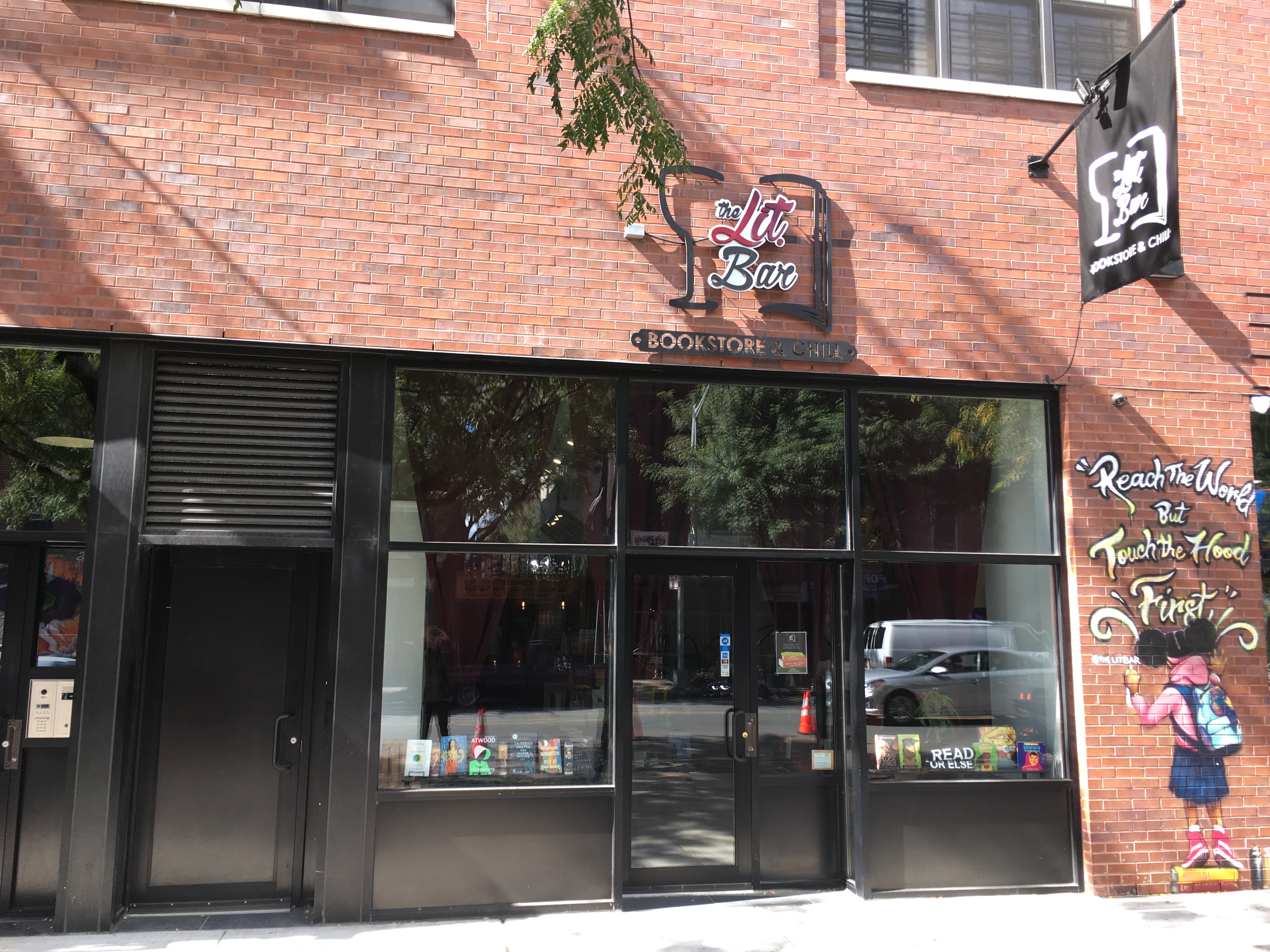
Above are a few of the new stores along Alexander Avenue between Bruckner Boulevard and 134th Street. This selection includes an overpriced vintage records store that appropriates African-American jazz culture with pictures of John Coltrane and Louis Armstrong and uses them as window advertising. Next there’s a hipster tea bar – no more need be said here. And finally we have The Lit Bar, which manages to bring together alcohol and reading and charge extra for both.

Alexander Avenue between Bruckner Boulevard and 134th Street
Above is the last remaining non-gentrified store, a Sunday school called Fordham Gospel Mission, directly next to an outlet of the expensive designer clothing store Famous Nobodys.
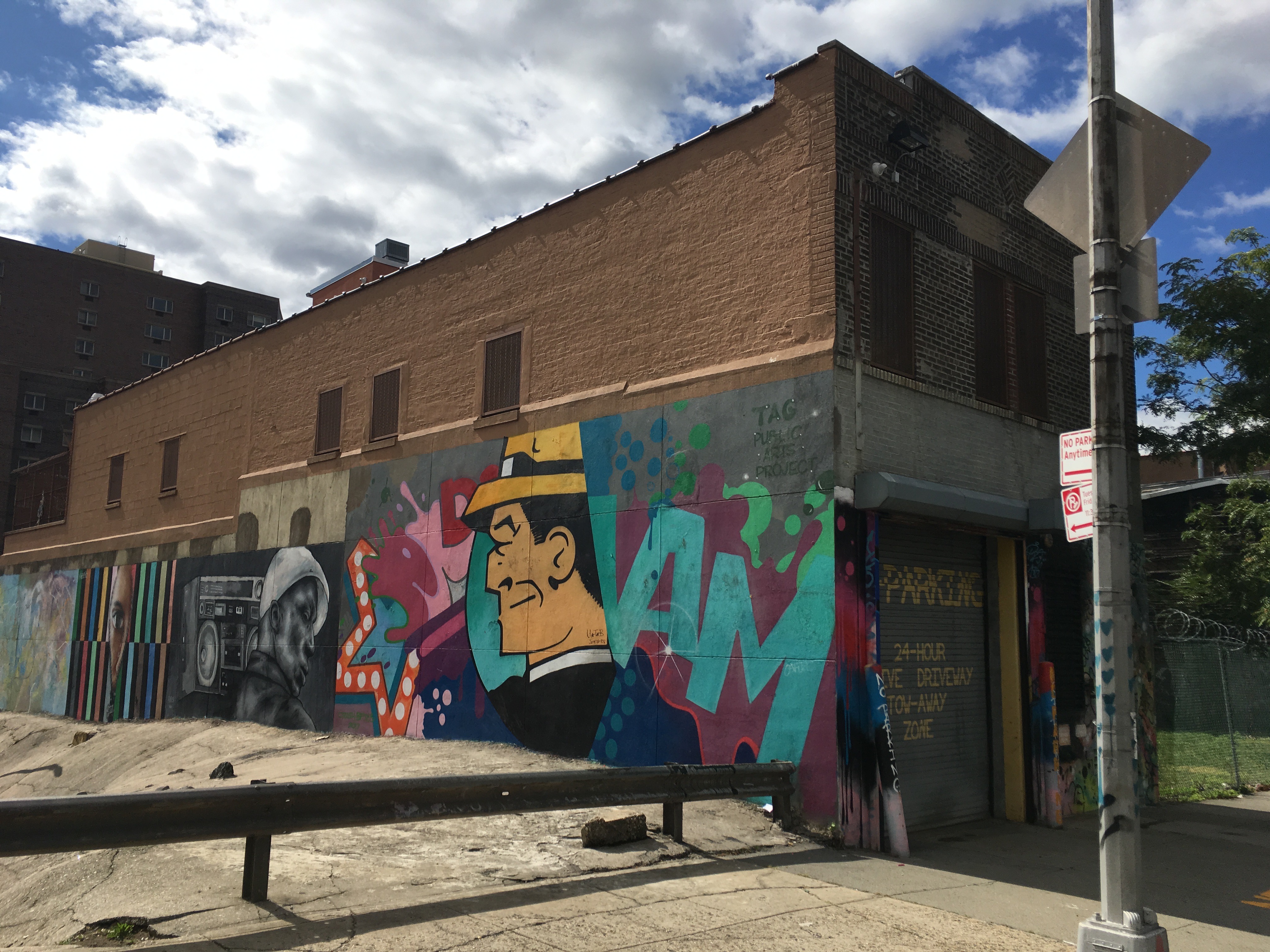
Part of the hyper-gentrification process is the re-branding of a working class neighborhood into a sheek, cool place. Developers typically exploit street artists’ systemic poverty by paying them good money to paint murals in neighborhoods to “spruce them up,” making them more attractive to potential wealthy people who want to live in an “authentic” neighborhood. Above are a few examples of this tactic used in Mott Haven.
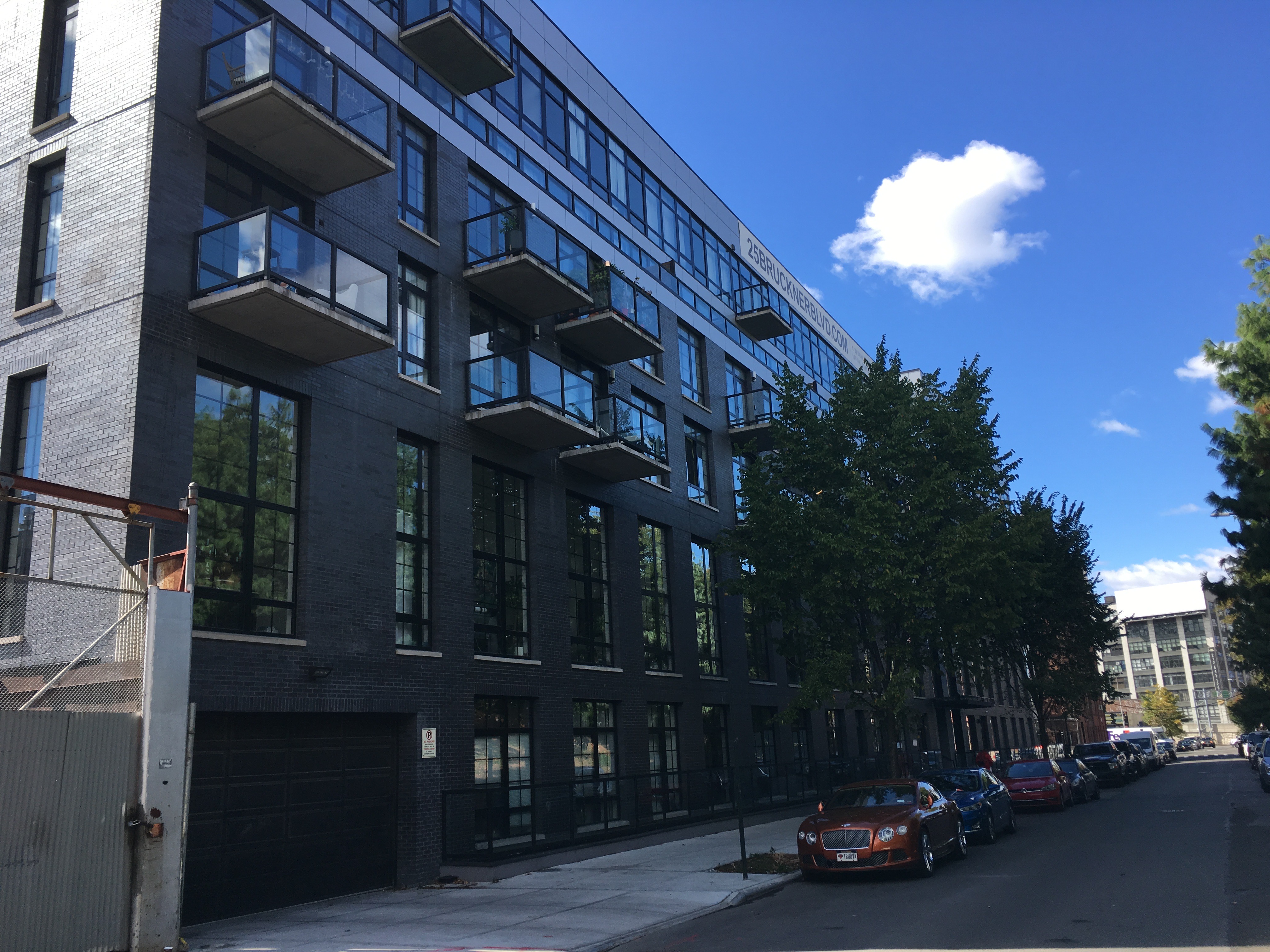
A shimmering glass condo rises. Overlooking what beautiful vista you ask? The Bruckner Expressway

Bruckner Boulevard between Alexander and Willis Avenues
An upscale “pet boutique” replaces the old deli-grocery in the first floor of this early twentieth century yellow-brick apartment building.
Along this one block stretch between Alexander and Willis avenues are four new upscale wine bars, as well as a pricey Mexican restaurant.
Below is the last remaining non-gentrified store – a furniture design and repair store that has been in that space for over thirty years.

Bruckner Boulevard between Alexander Avenue and Willis Avenue
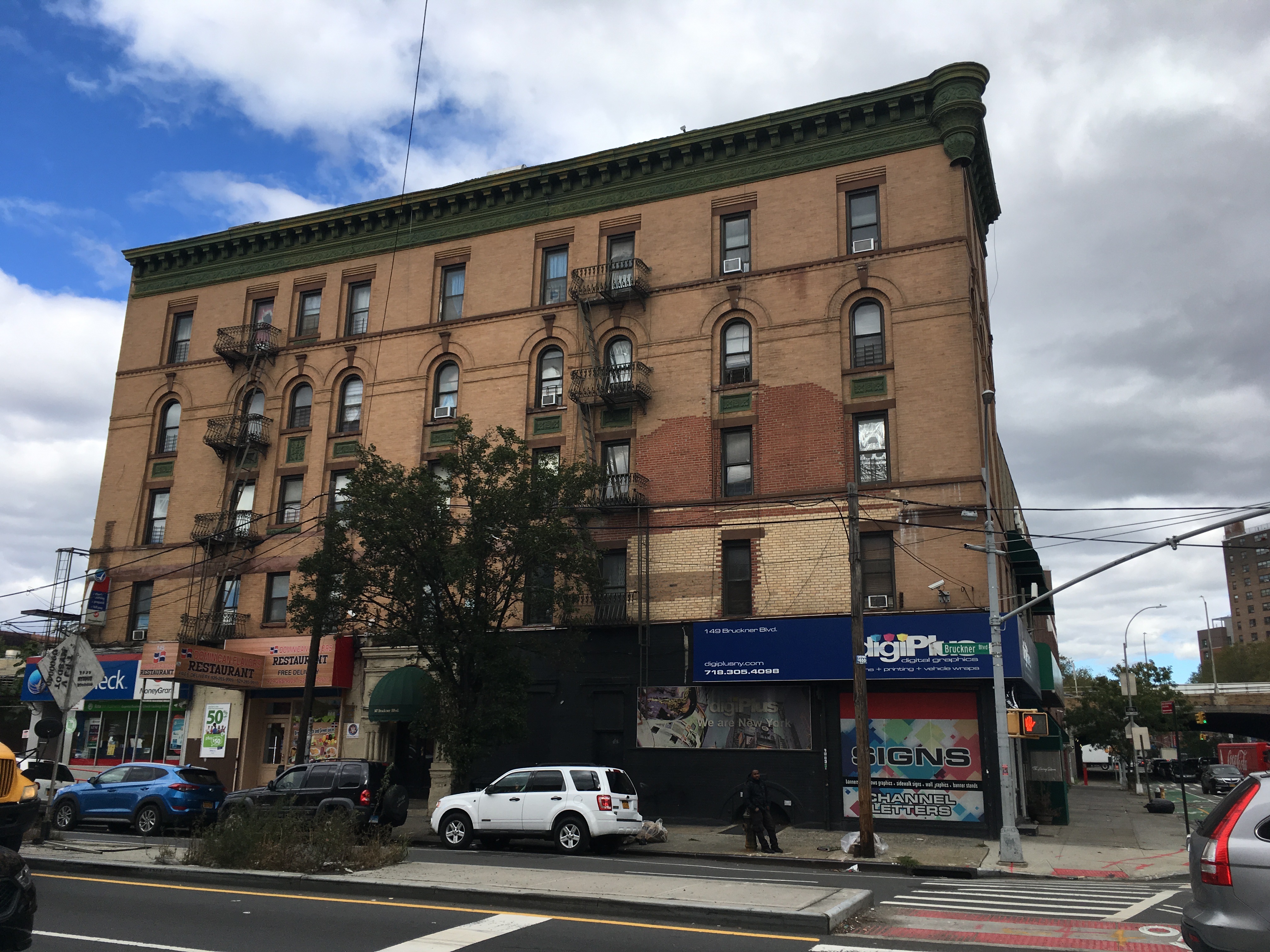
Bruckner Boulevard and Saint Ann’s Avenue
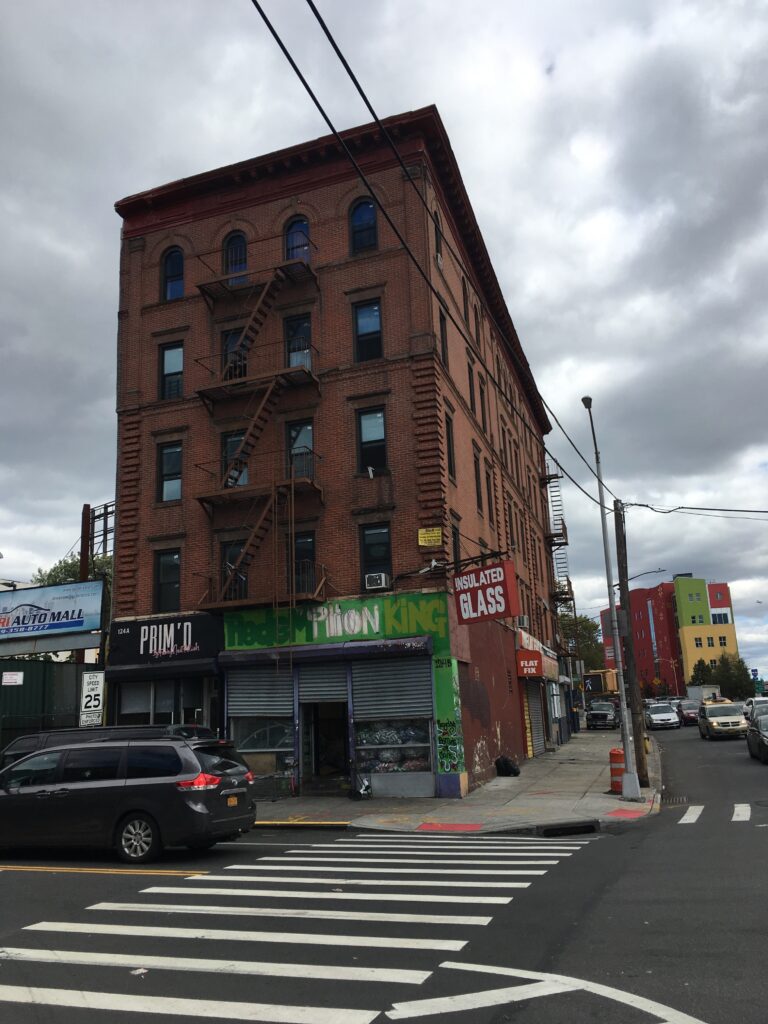
Bruckner Boulevard and Saint Ann’s Avenue
As shown in the above two pictures, gentrification has yet to spread completely down Bruckner Boulevard. These buildings have not been renovated or repainted and their stores – an auto body shop, a small recycling center, and a deli – still reflect the needs of this working class neighborhood.
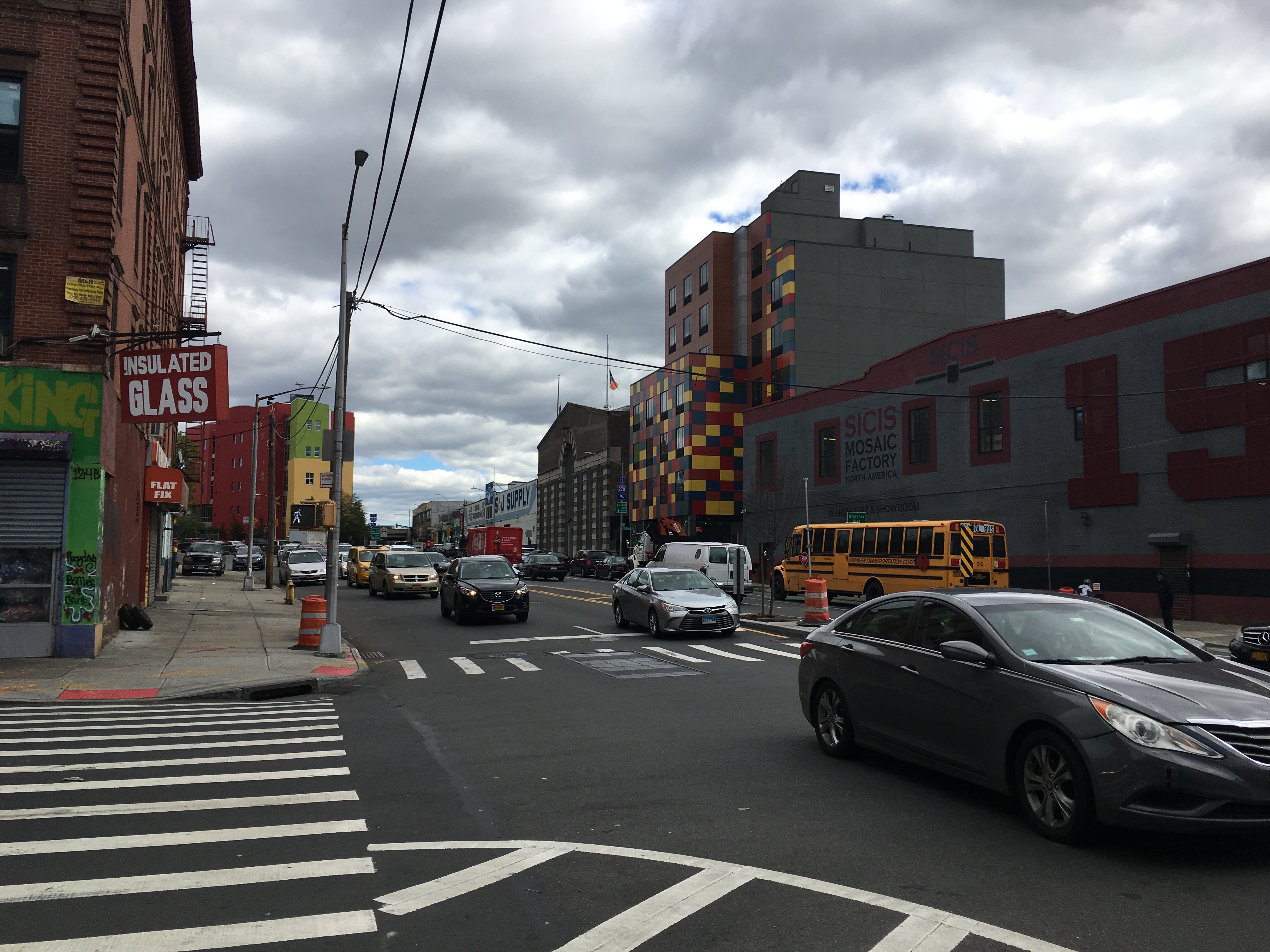
Bruckner Boulevard and Saint Ann’s Avenue
However, undeterred by the presence of manufacturing industry, a wide, particularly pedestrian unfriendly boulevard and the Bruckner Expressway, developers have chosen to push gentrification forward through the conversion of two former industrial businesses into colorful, plasticky private charter schools.
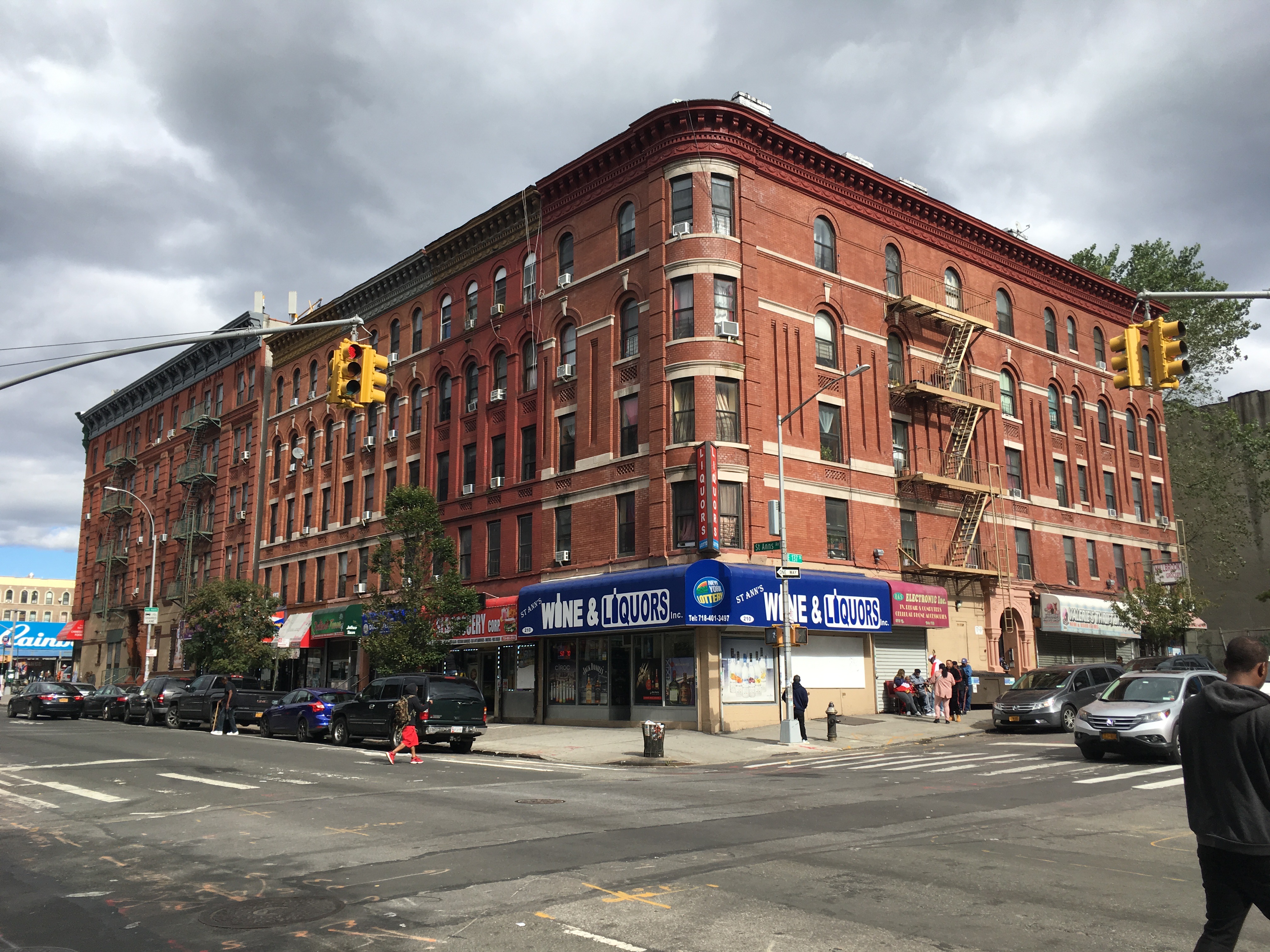
137th Street and Saint Ann’s Avenue

137th Street and Saint Ann’s Avenue
The above two pictures are of opposite sides of the same street corner. These blocks of beautifully preserved old tenements remain untouched by gentrification – for now.
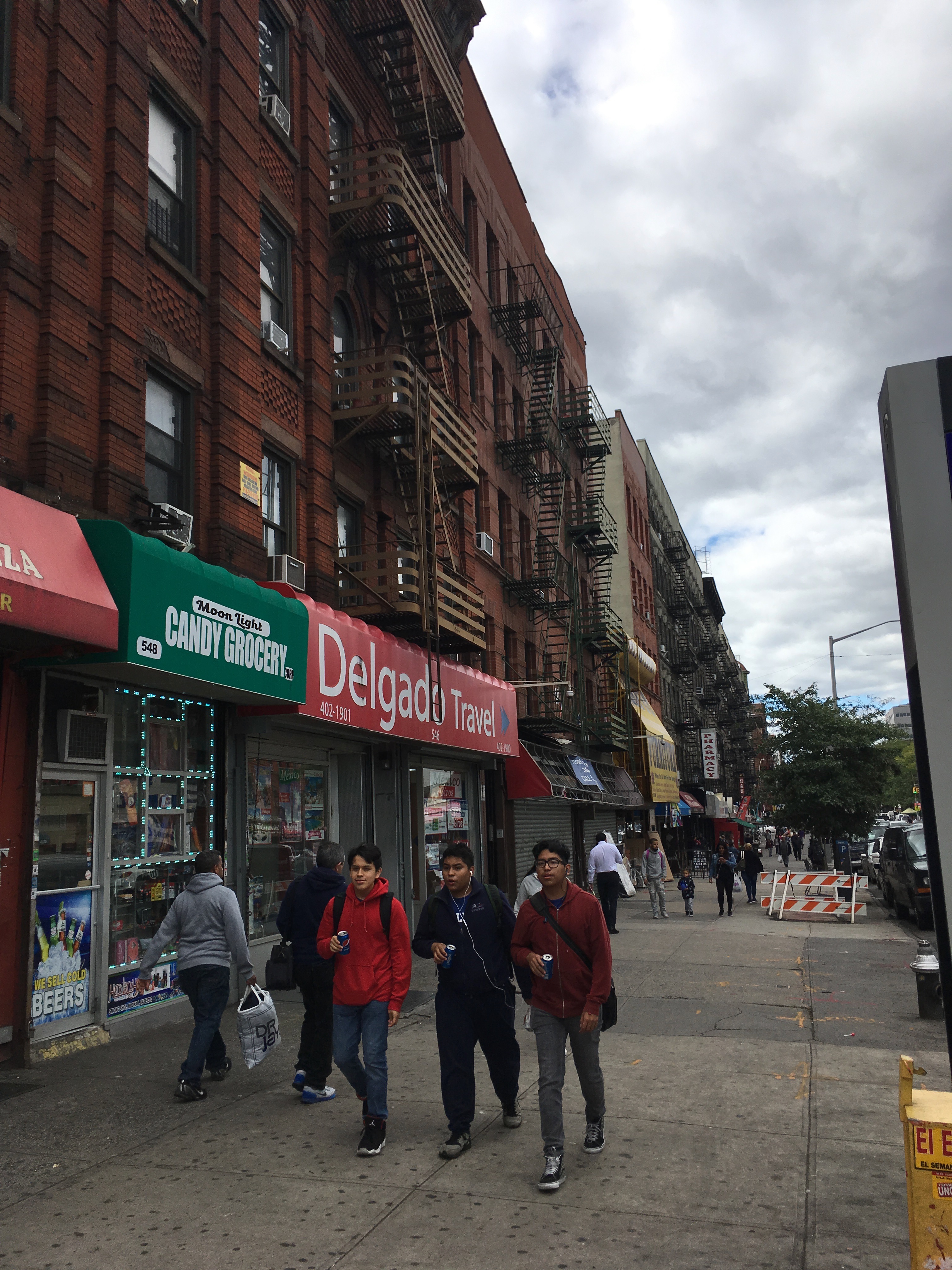
On the corner of 138th Street and Saint Anns Avenue the street suddenly bursts into life. Music blasts from wireless electronic repair stores, people fill the streets and the buildings are warm and alive, speaking volumes in their very bricks. Potted plants hang out of windows and fire escapes, crawling and curving their way around the bricks and mortar.

138th Street between Saint Ann’s Avenue and Brook Avenue

138th Street between Saint Ann’s Avenue and Brook Avenue

138th Street between Saint Ann’s Avenue and Brook Avenue
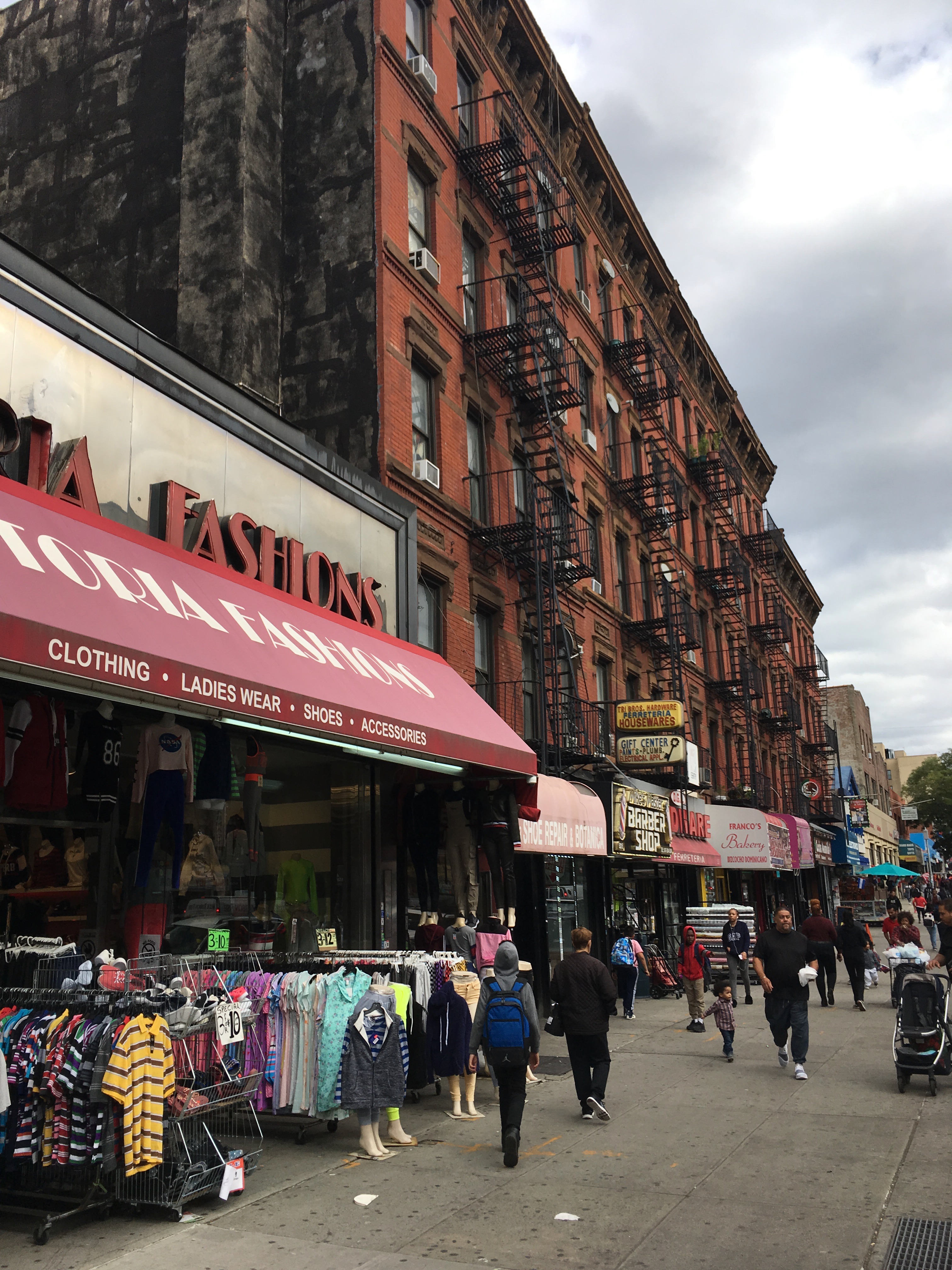
138th Street between Saint Ann’s Avenue and Brook Avenue
When I talk about “the street” I mean more than just the pavement. The street is a place in itself; what makes that place so interesting is that it is a mixing ground. It is where people, storefronts, buildings, cars and bikes comes together to form a great system. When all the crucial elements are present, the system creates something greater than the sum of its parts: it brings the street to life. Here on East 138th Street there is a buzz or an energy about the street. You can feel it as soon as you turn the corner – everything just feels more alive. That energy is the life of the street and the presence that of energy is what determines whether a street – and all the people, buildings and storefronts – lives or dies.

138th Street and Brook Avenue
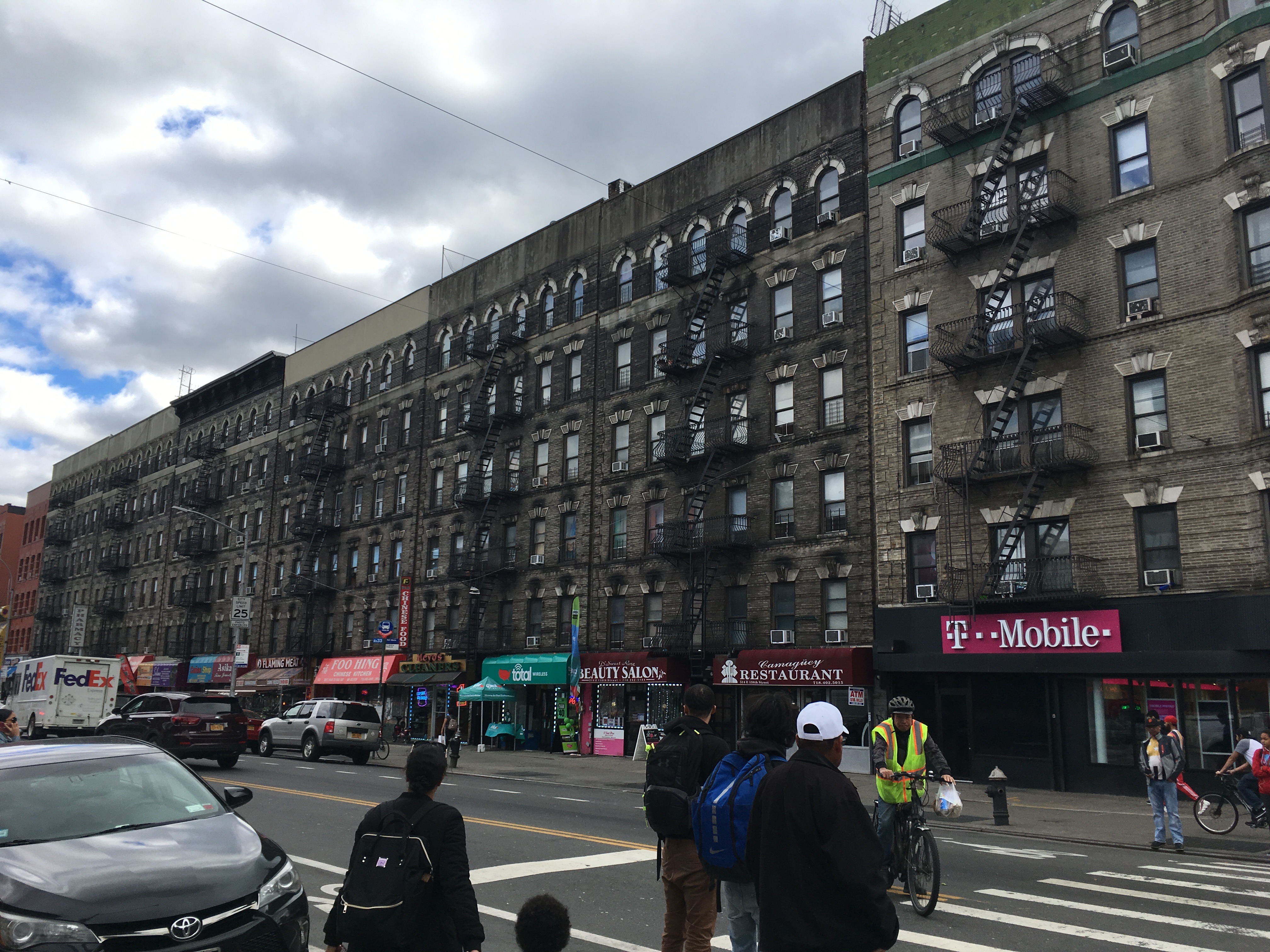
138th Street and Brook Avenue
Above, old grey-brick tenements line the street, their first floors jam-packed with storefronts all vying for (and contributing to) the life of the street.
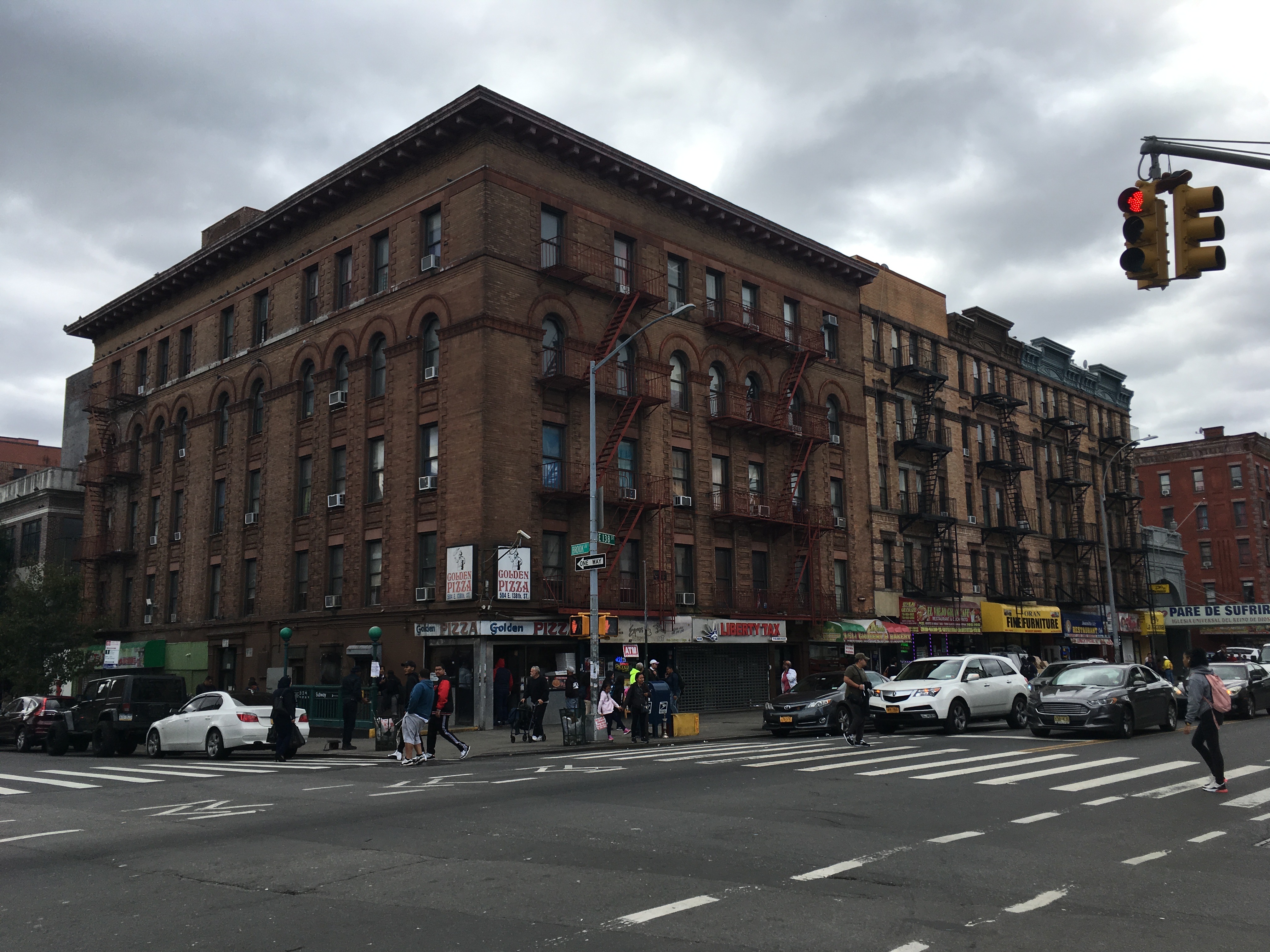
138th Street and Brook Avenue
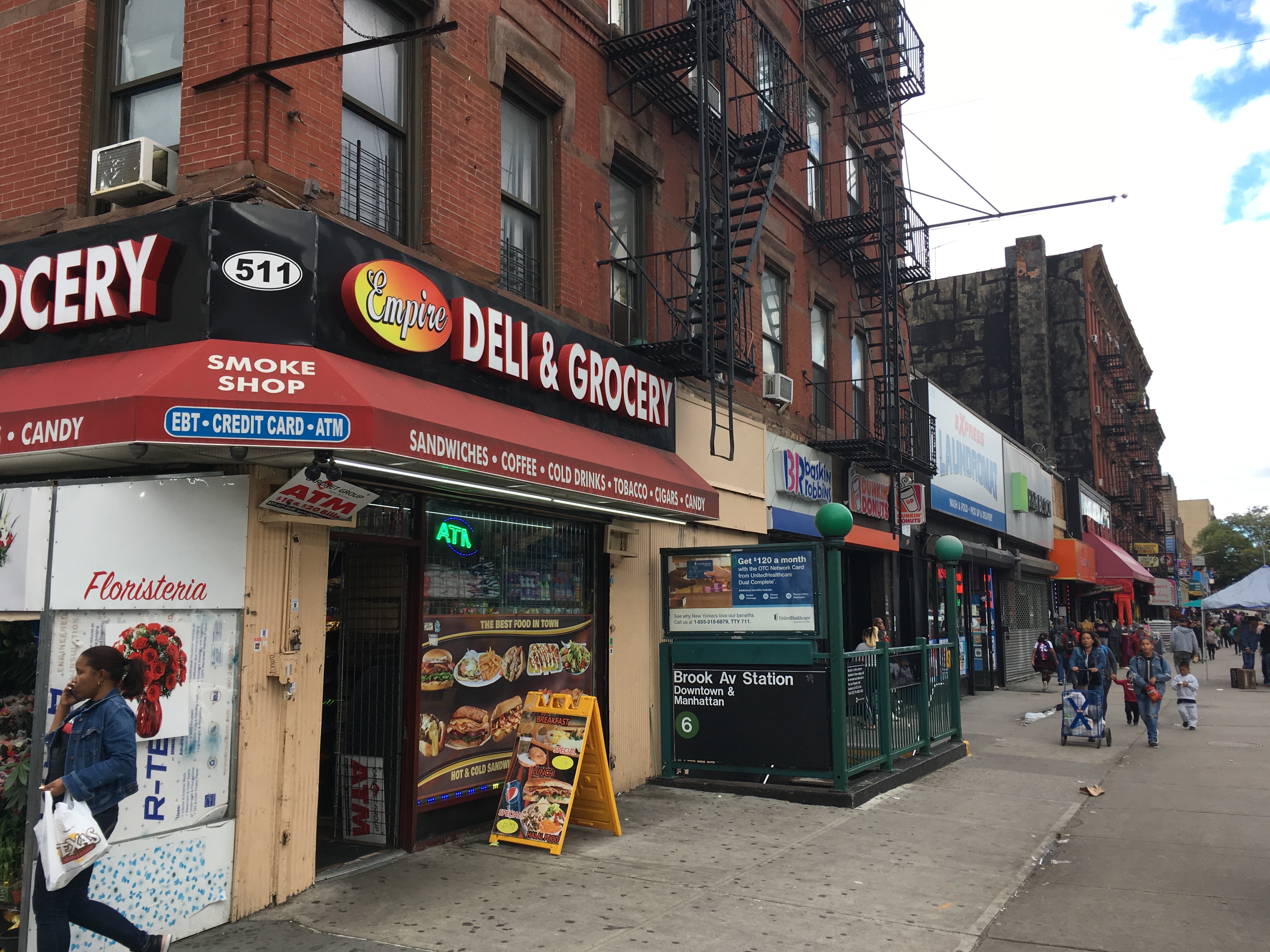
138th Street and Brook Avenue
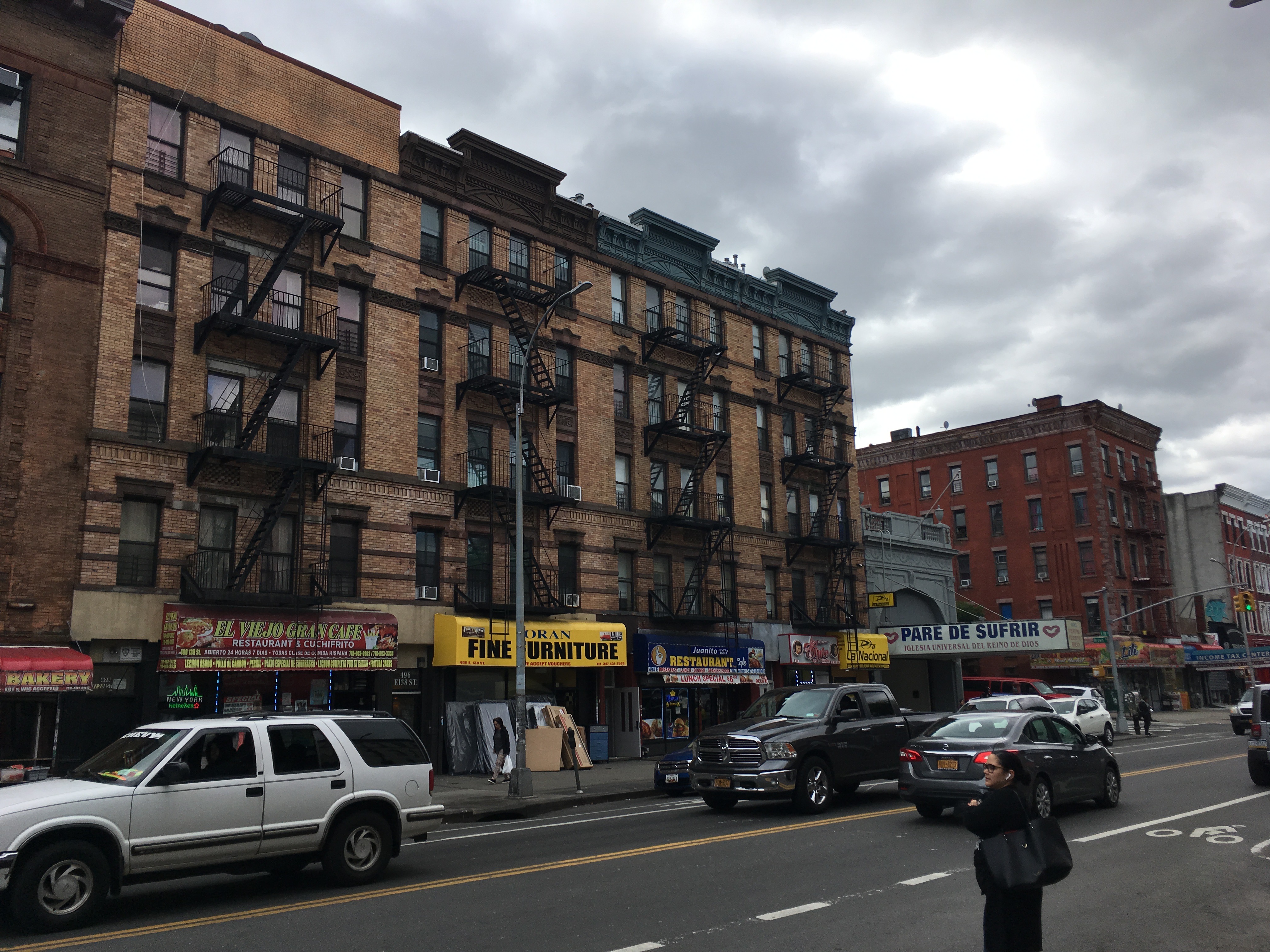
138th Street between Brook Avenue and Brown Place
On the bottom right side of the above picture is an old one-story theater that the community has repurposed into a church. It reads “Pare de Sufrir” or “Stop Suffering” in a big blue-and-white sign.
138th Street and Brown Place
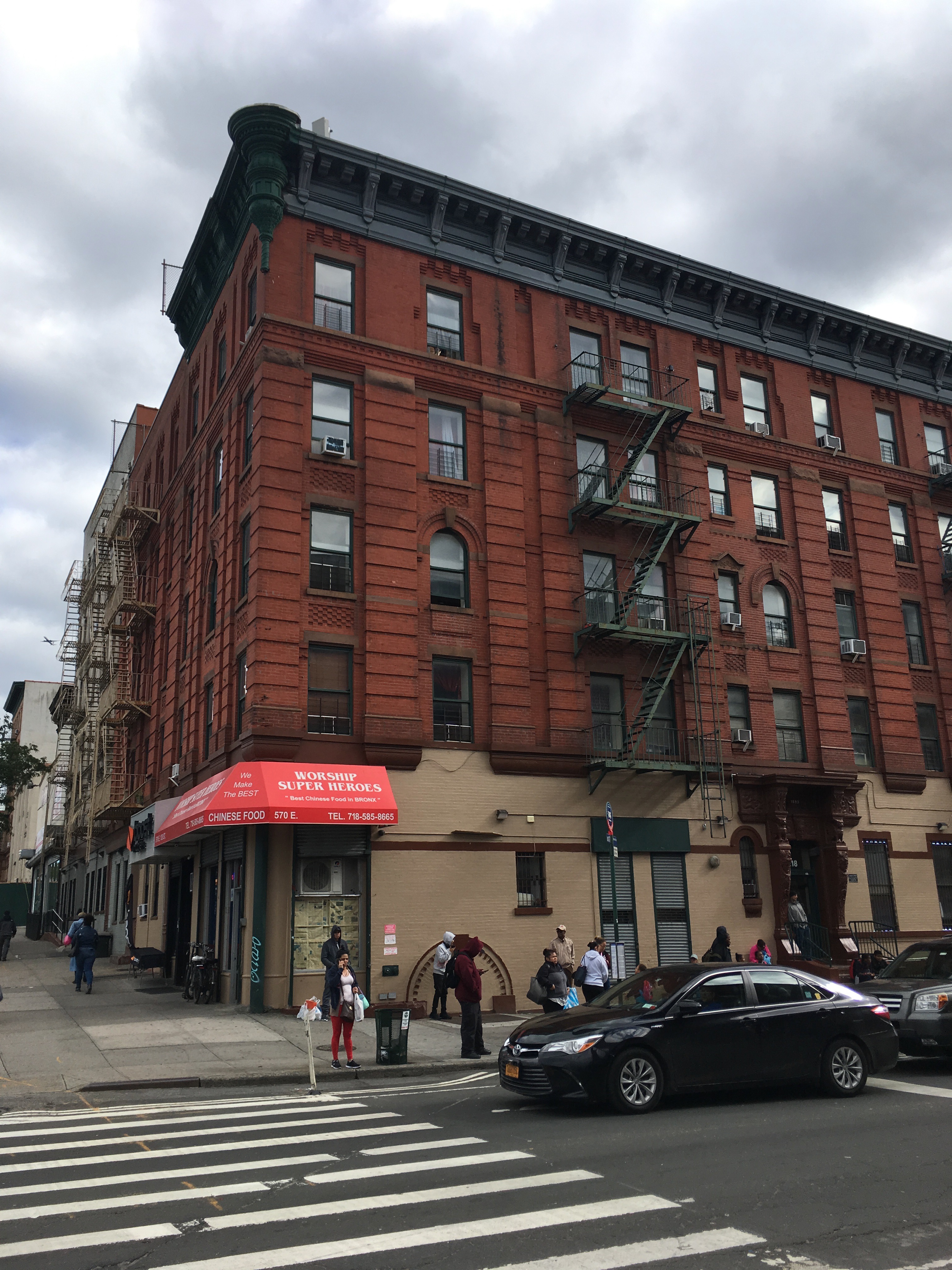
138th Street and Saint Ann’s Avenue
This final section of the page below will mainly focus on the stretch of East 149th Street, the upper border of Mott Haven, between Saint Ann’s Avenue and Willis Avenue.

Saint Ann’s Avenue and East 139th Street
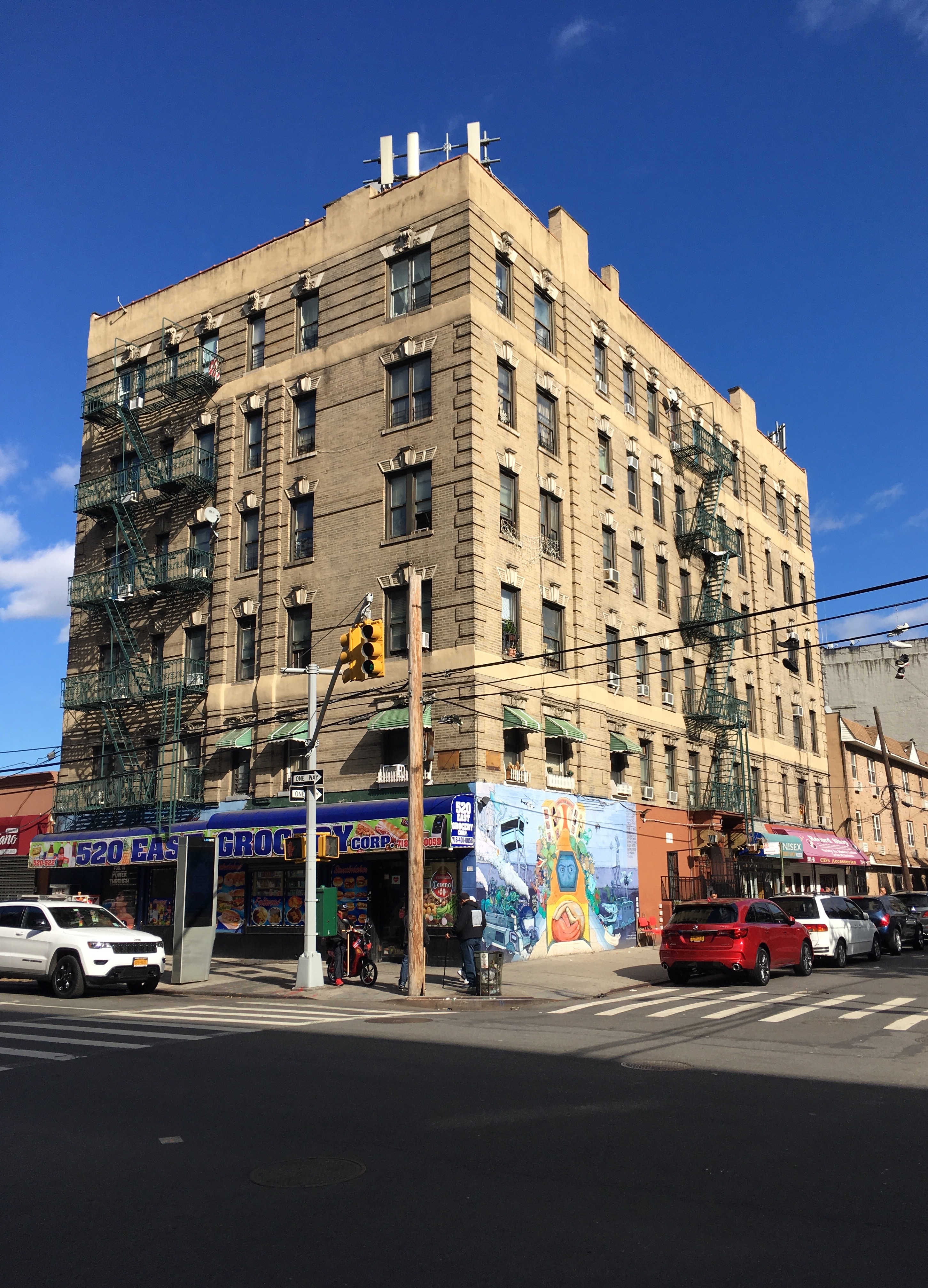
Brook Avenue and East 148th Street

East 142nd Street between Saint Ann’s Avenue and Brook Avenue
Above are a couple sleek new apartment buildings going up, squeezing in on either side of an old tenement.
Just as on East 138th Street, as you turn the corner the street explodes into life. East 149th Street is teeming with life; the people, the stores, the cars and bikes and the commotion of it all just makes you feel so alive!
In just the above three pictures there are two guys blasting music on their stereo, one man handing out pamphlets, thirteen small businesses, and simply tons and tons of people. And that isn’t even counting the people behind me who weren’t in the picture, the cars on the street to my right, and the thousands of people in the shops and apartments above.

East 149th Street and Bergen Avenue
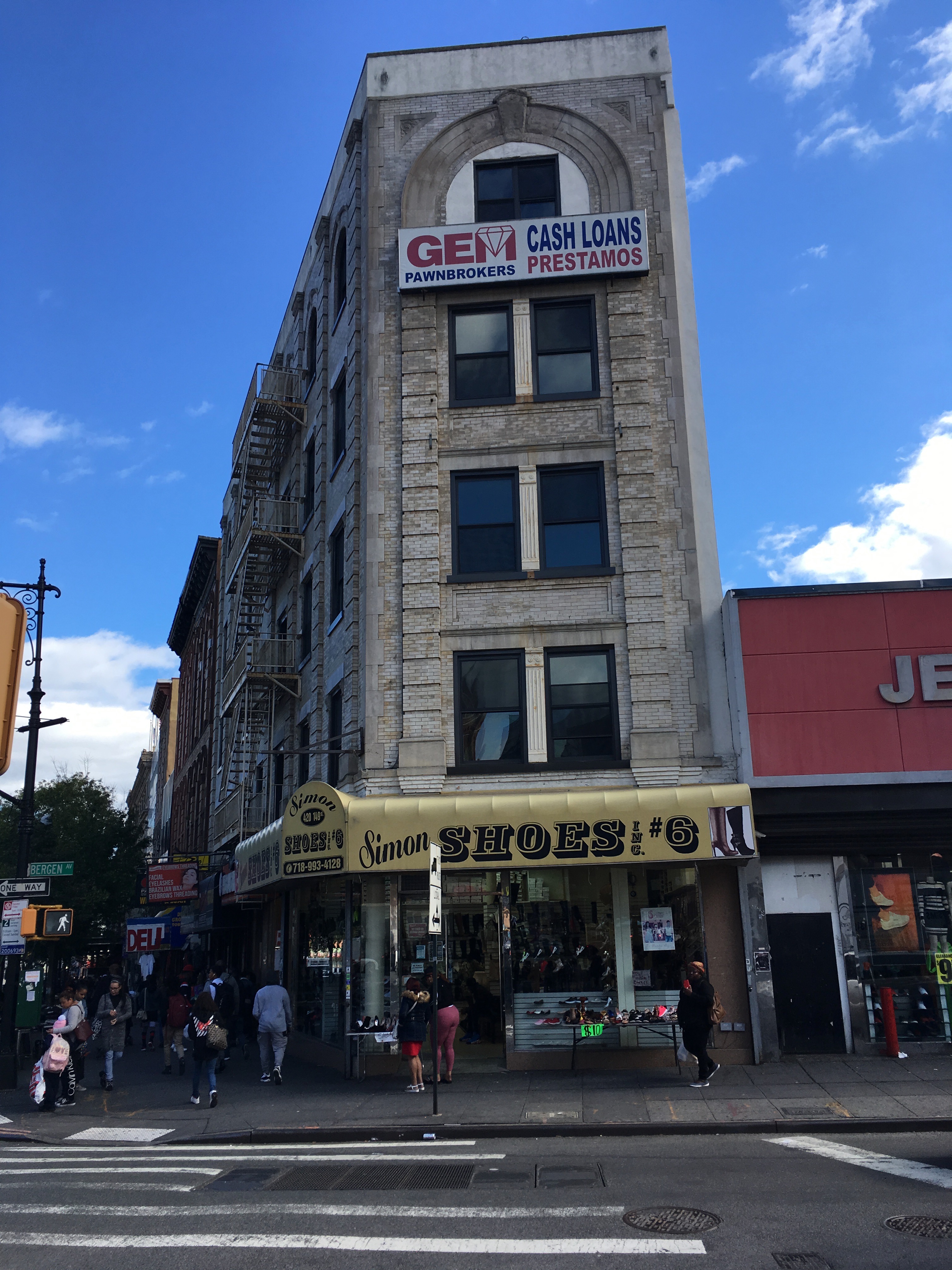
East 149th Street and Bergen Avenue
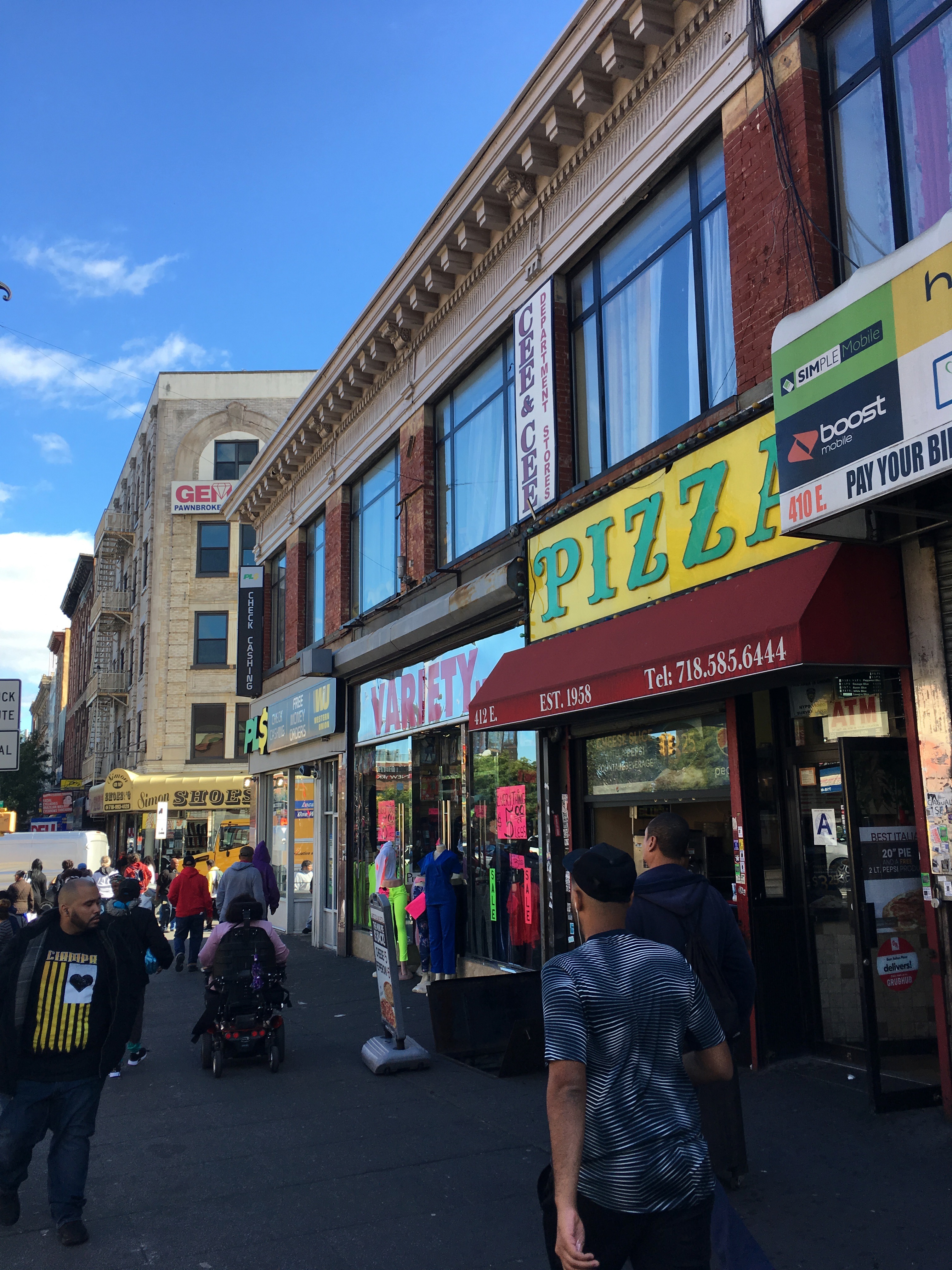
East 149th Street
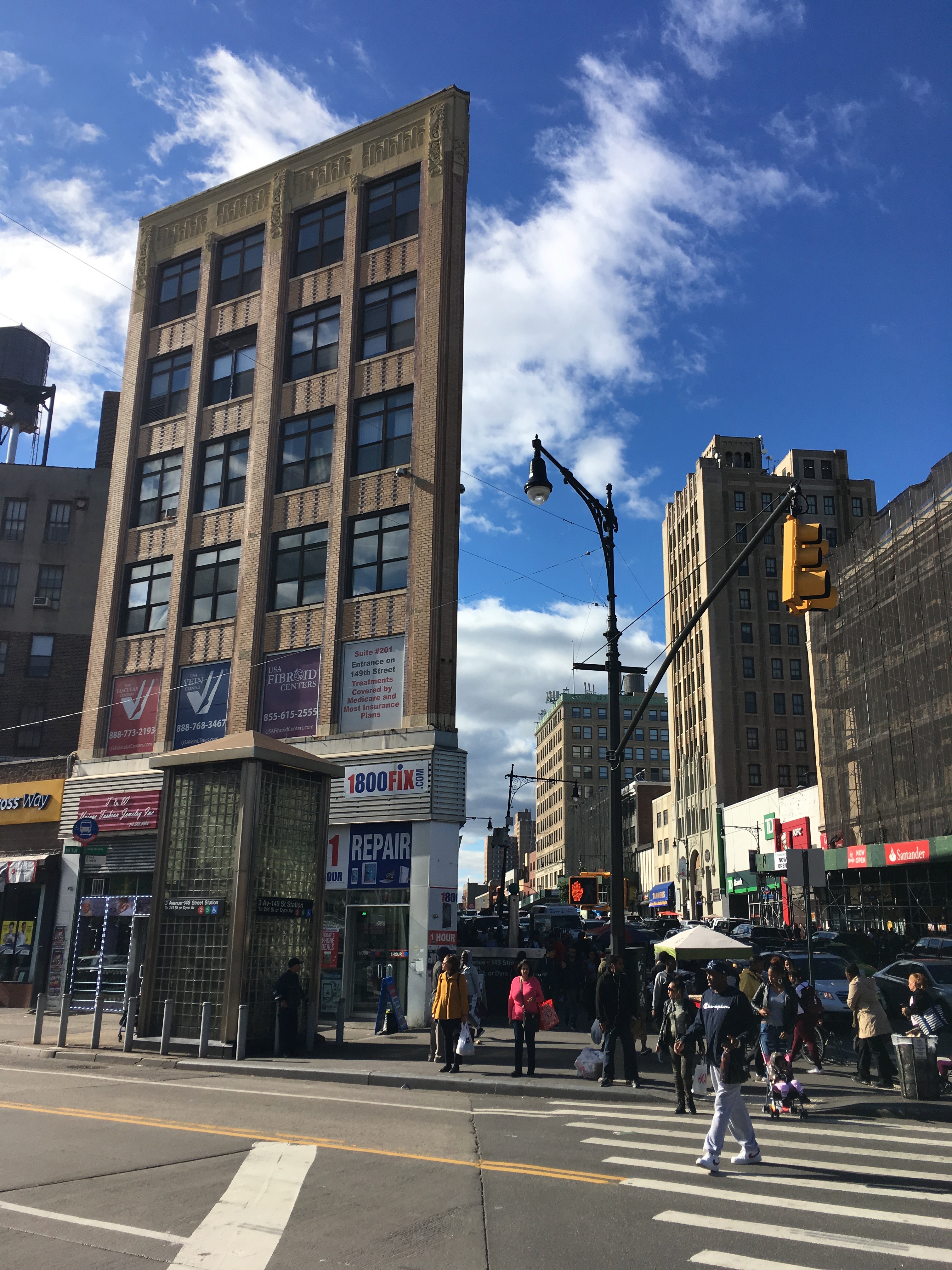
The intersection of East 149th Street, Third Avenue, Willis Avenue and Melrose Avenue

This is the intersection of East 149th with Third Avenue, Melrose Avenue, Willis Avenue, and Westchester Avenue – four of the mainthroughfares of the Bronx. It isn’t just the streets that make this place come alive though, this is also the hub for six bus routes and three subway lines. This combination makes standing here feel like standing at the center of the world. There’s a constant whirling swarm of movement all around you and you can’t help but be pulled into its life-giving energy.

Below are many pictures of this intersection. Of course, the pictures don’t do it justice. They leave out the sounds of constant honking cars, the compression brakes of busses stopping, the steam rising from the halal trucks, the women selling ice cream, the high school kids joking around, the men handing out religious pamphlets in Spanish…
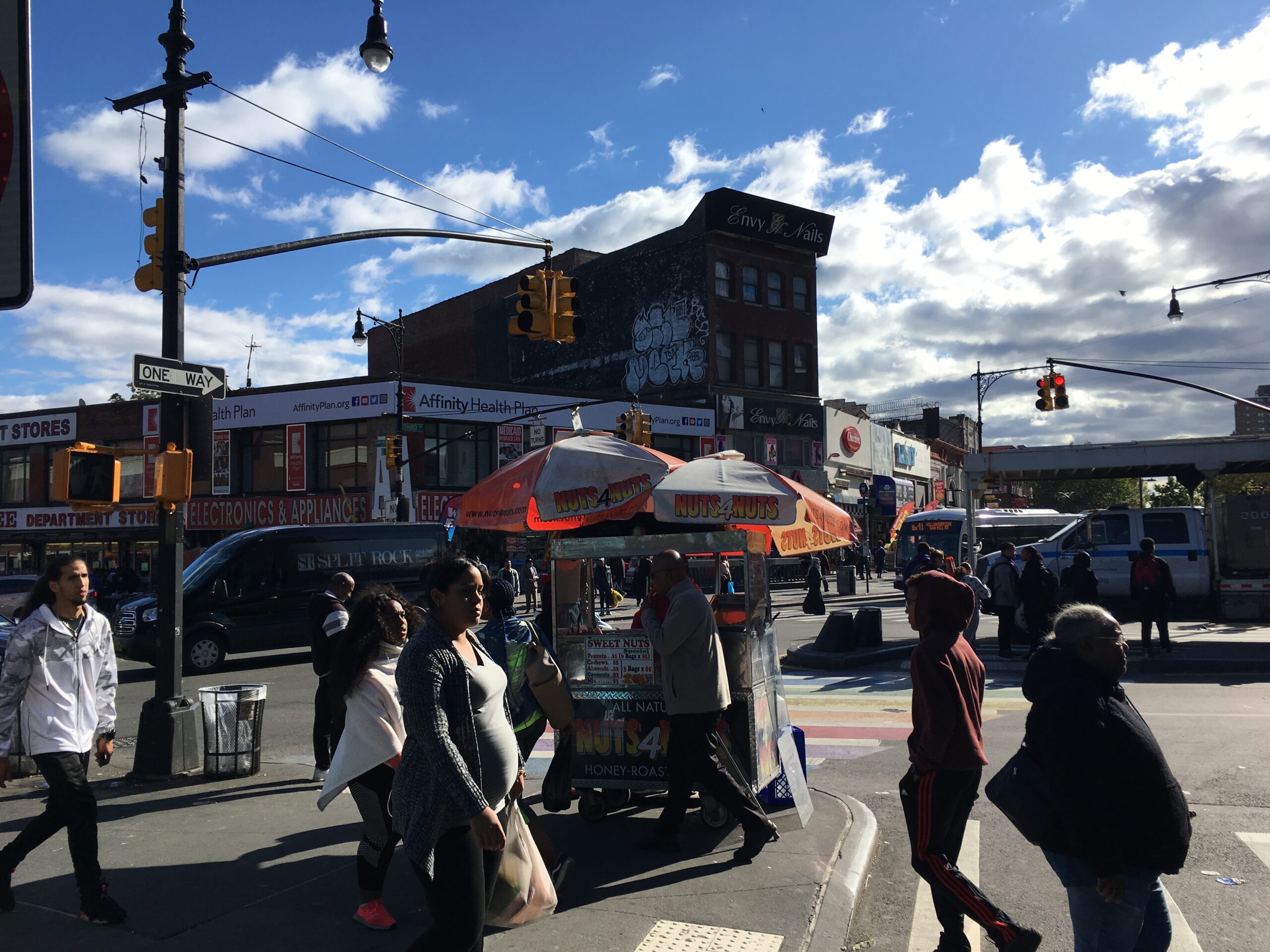
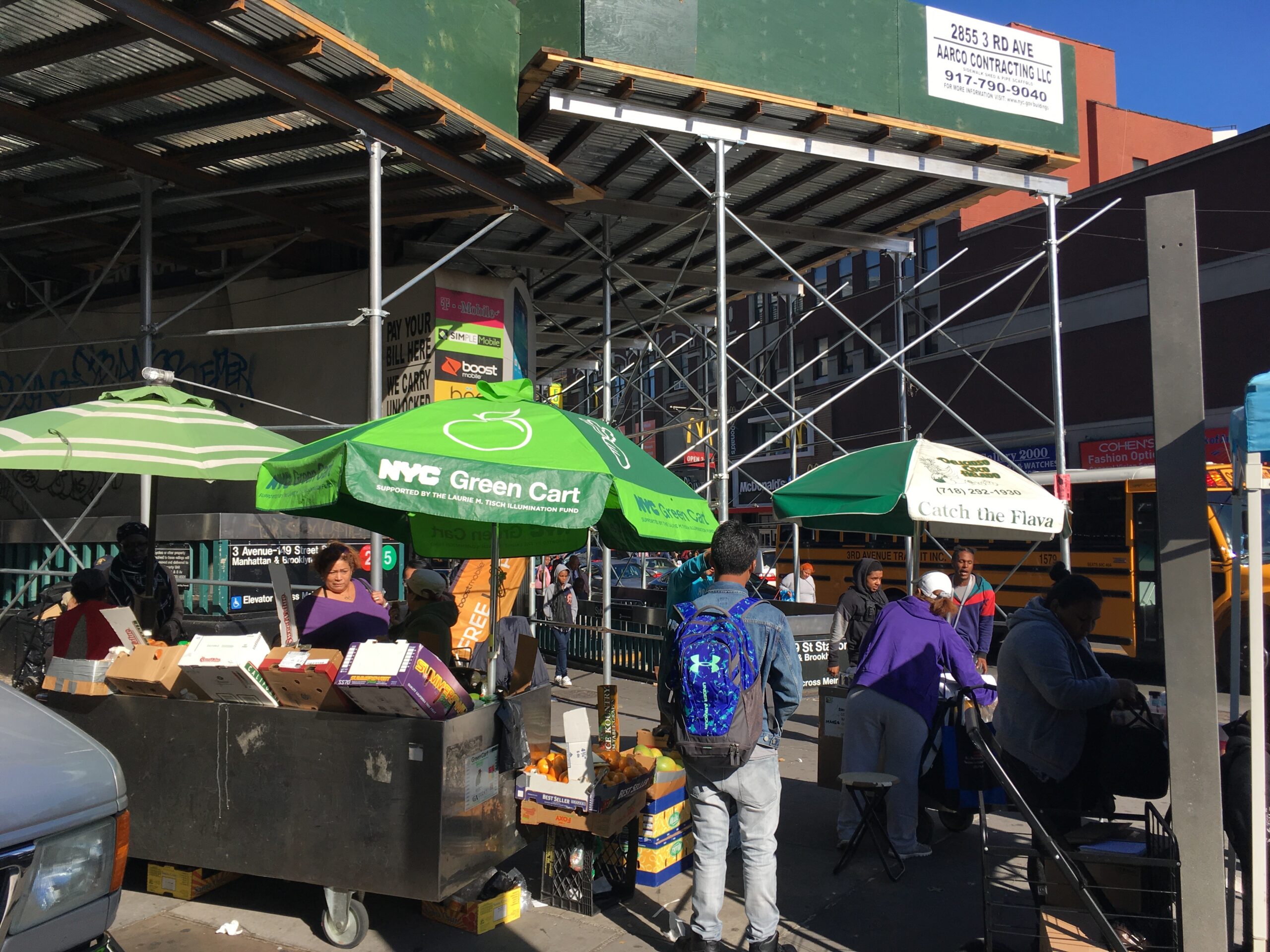

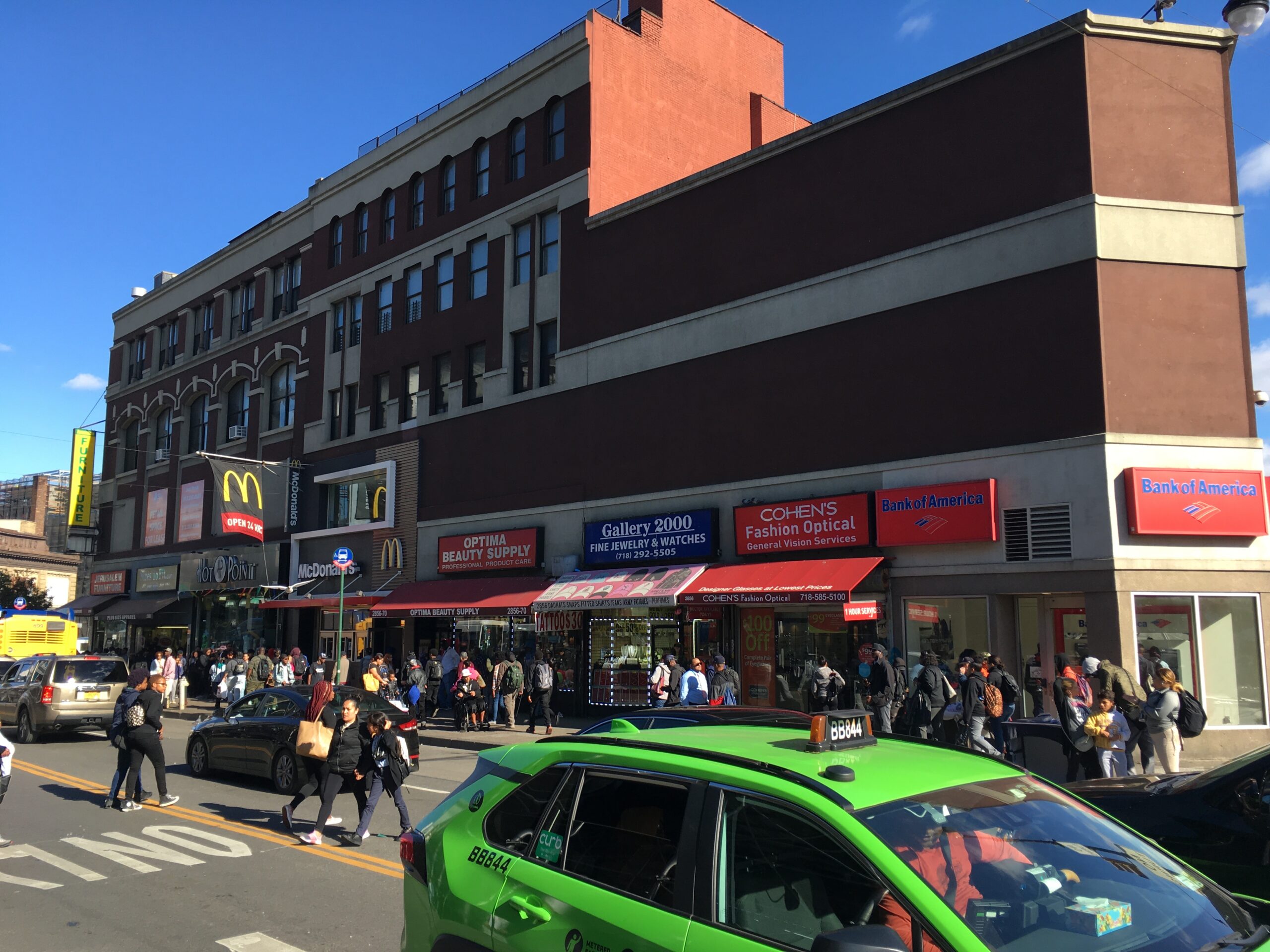
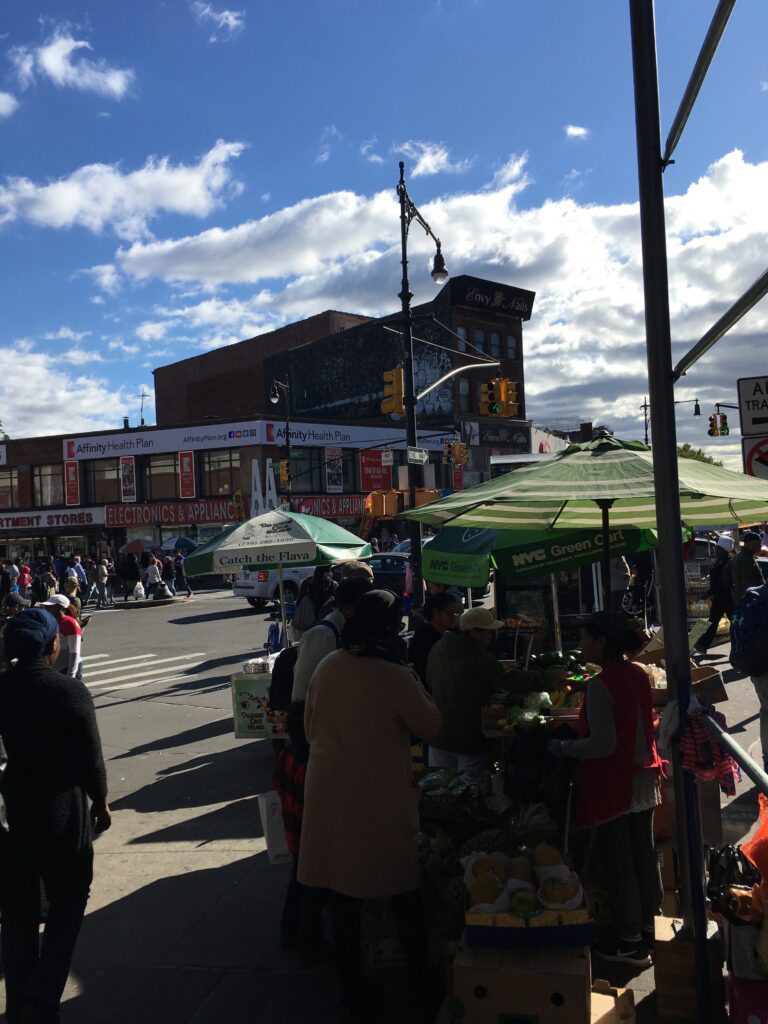
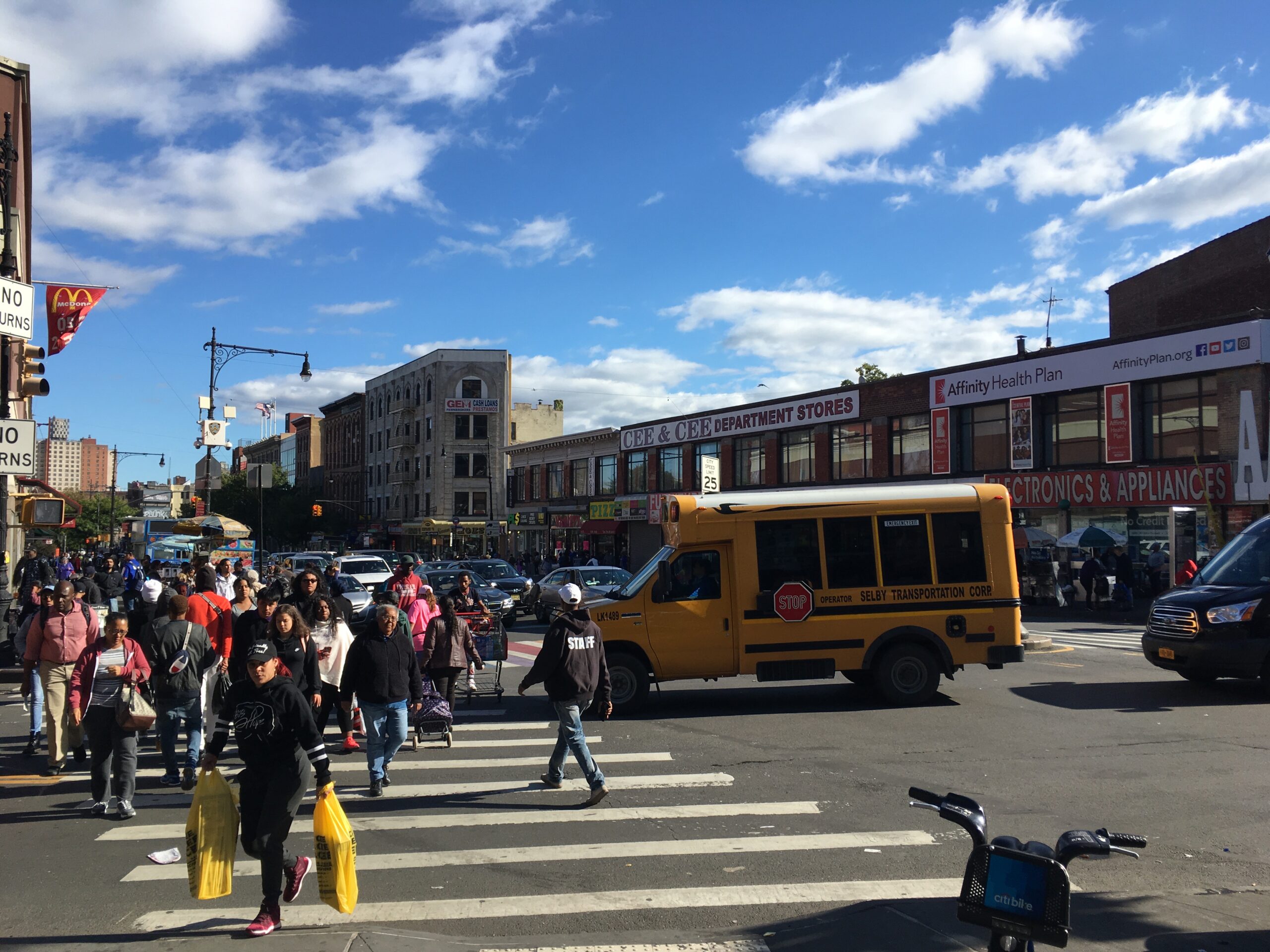
Looking east down 149th Street



